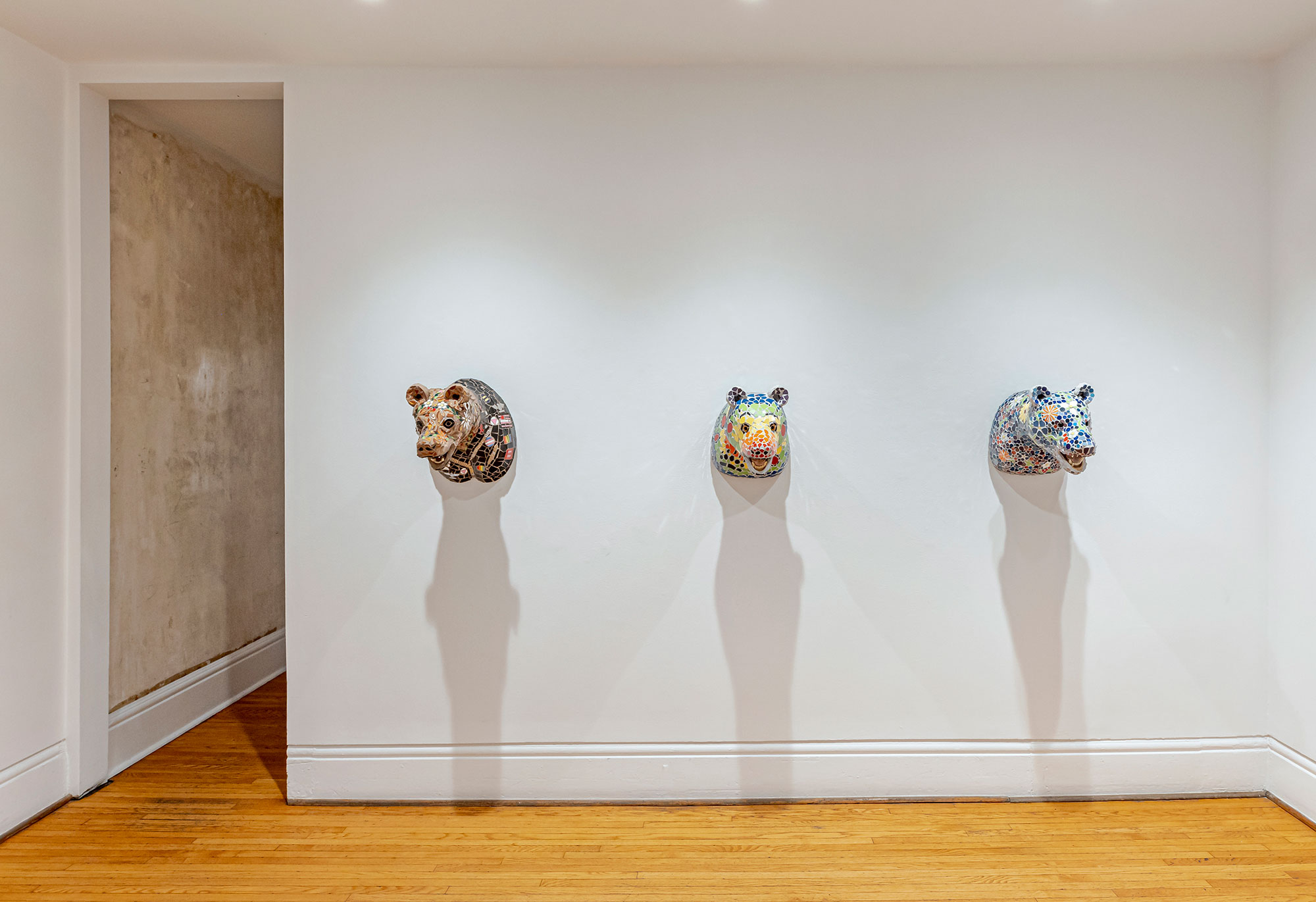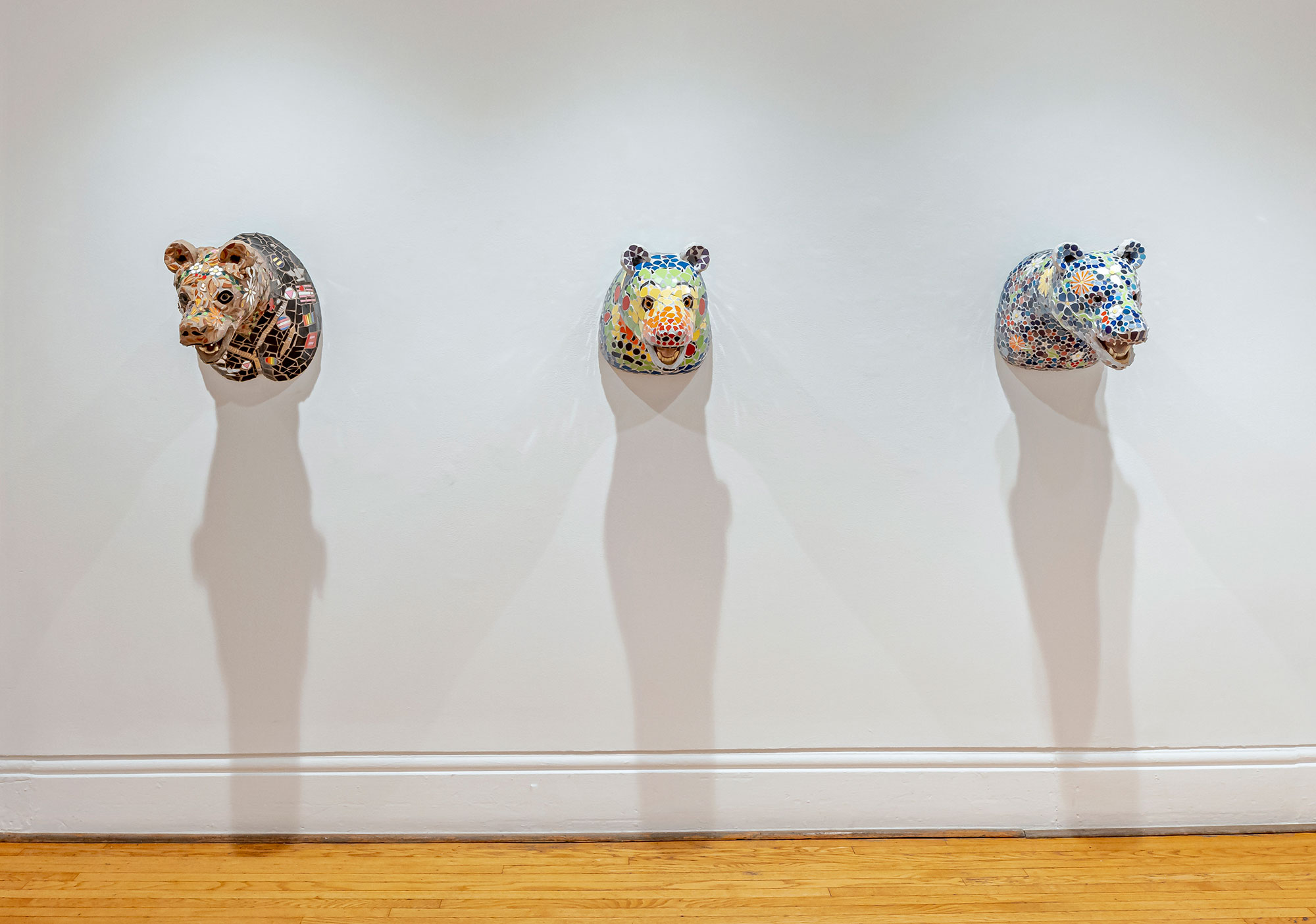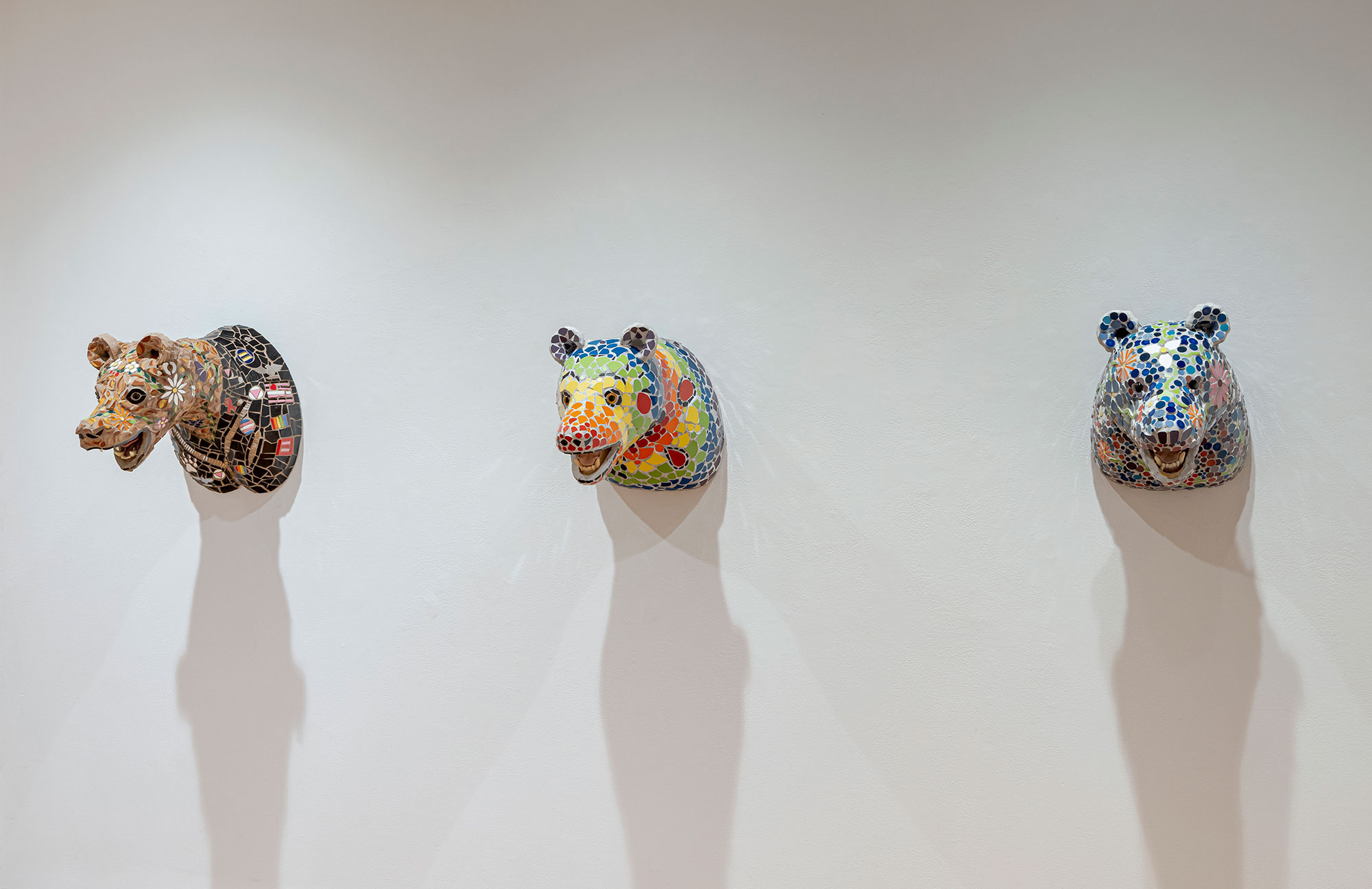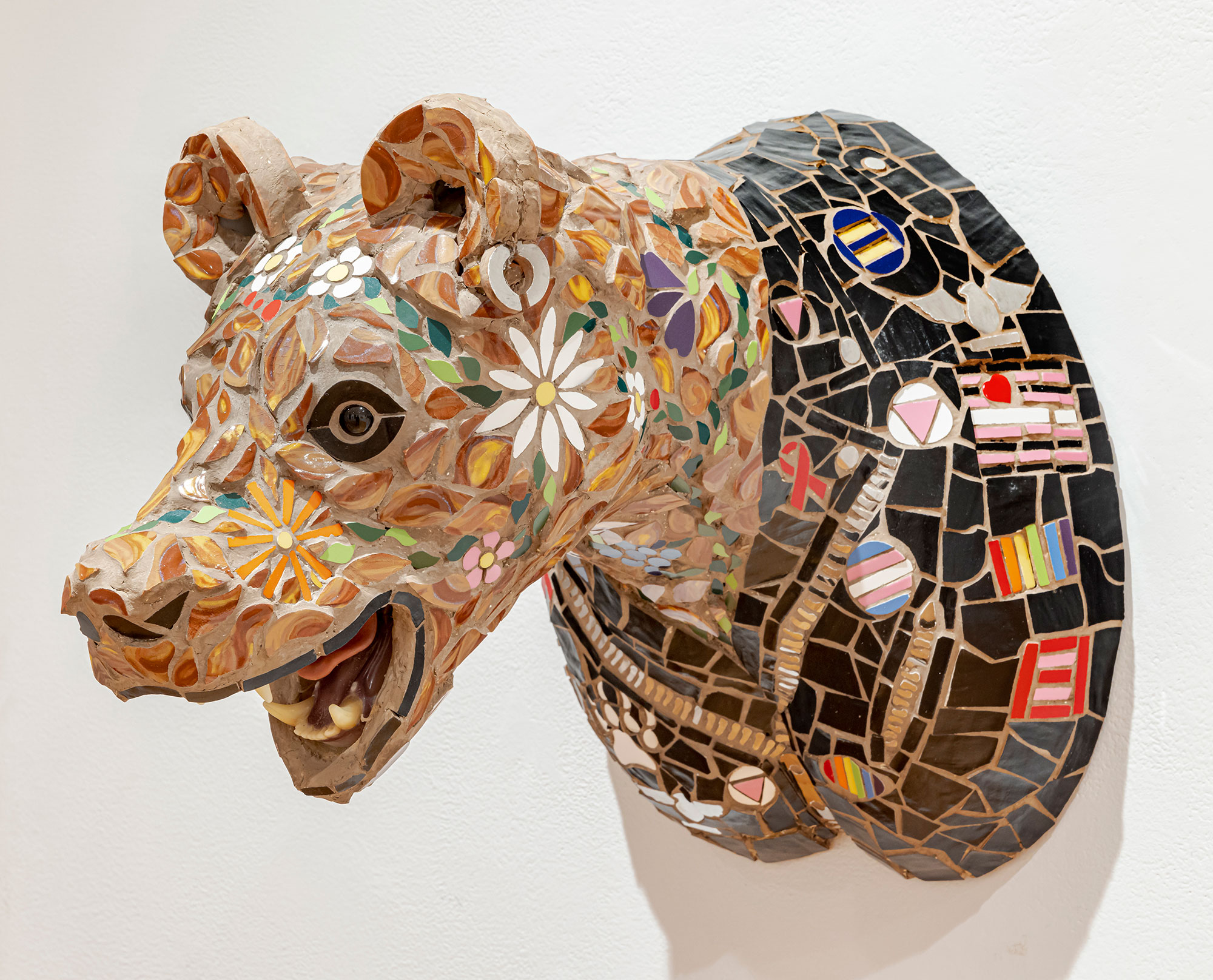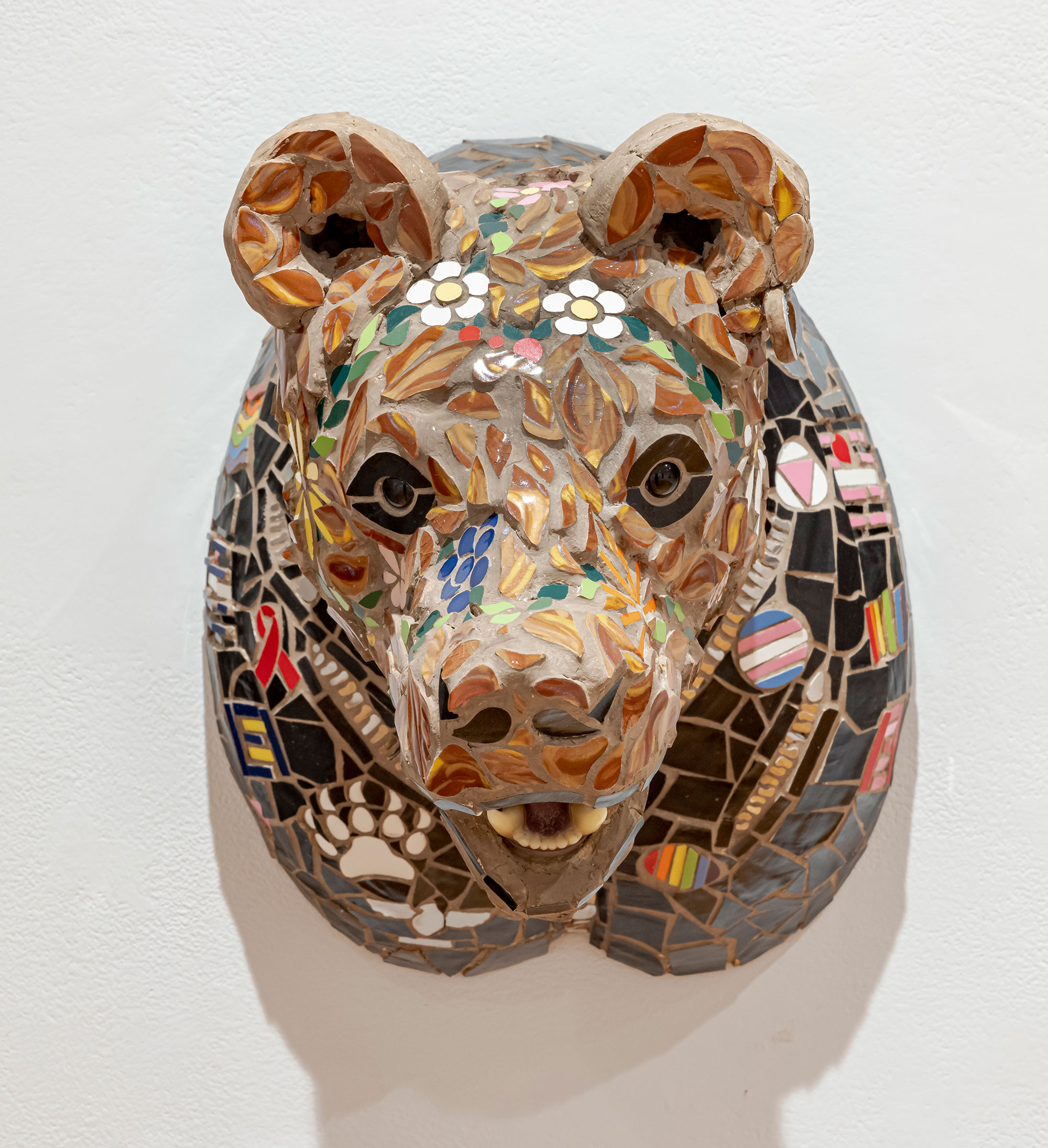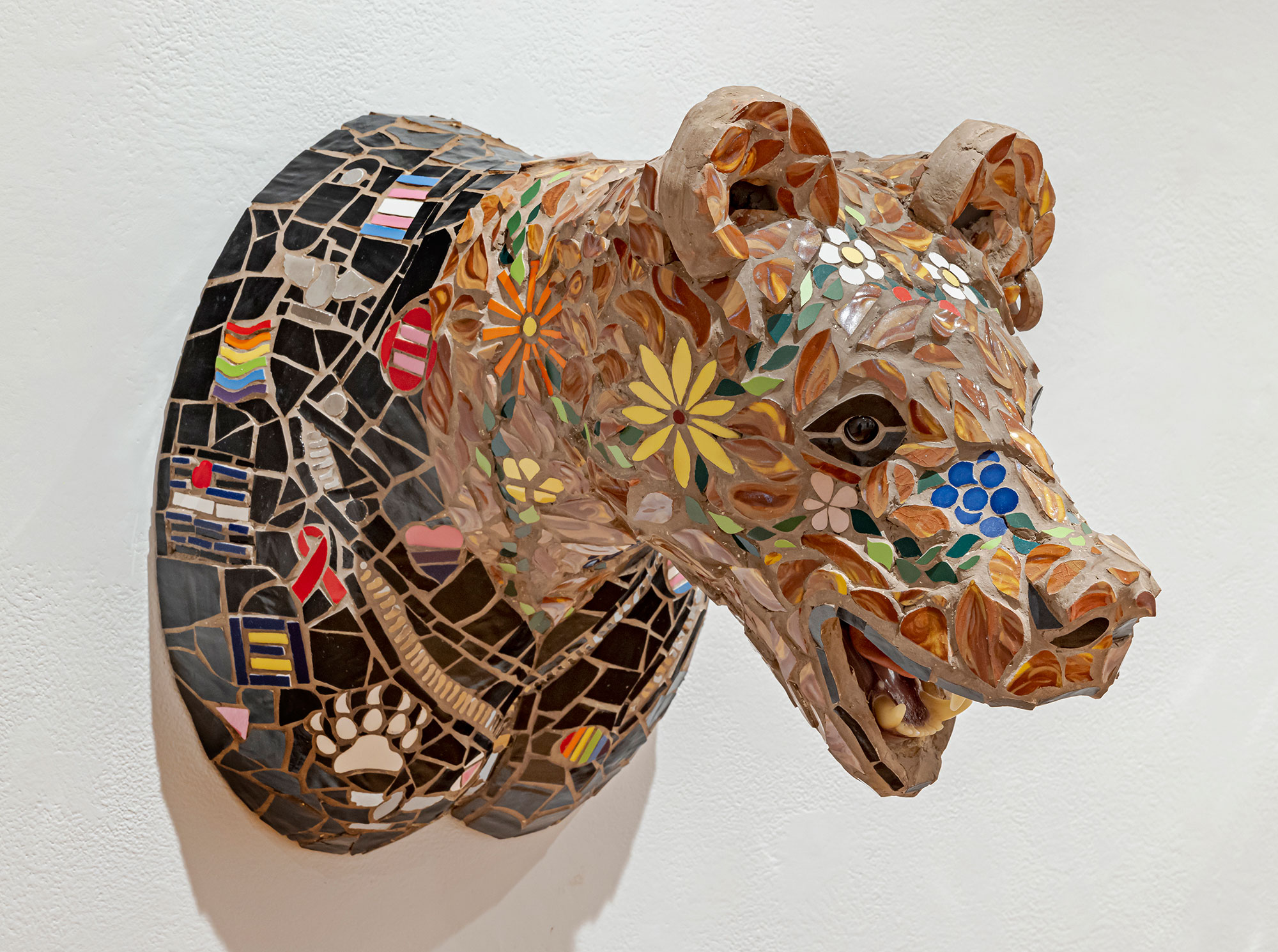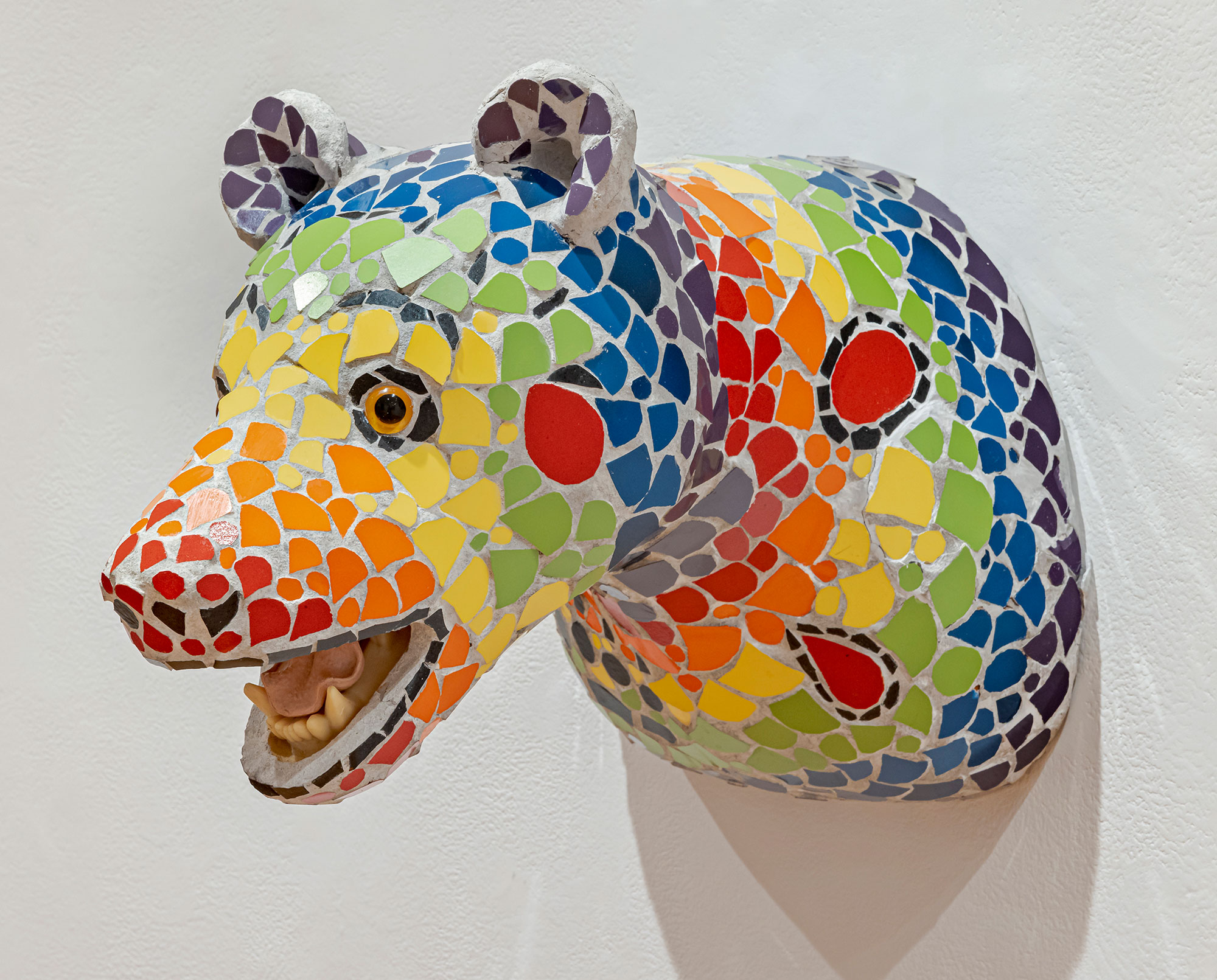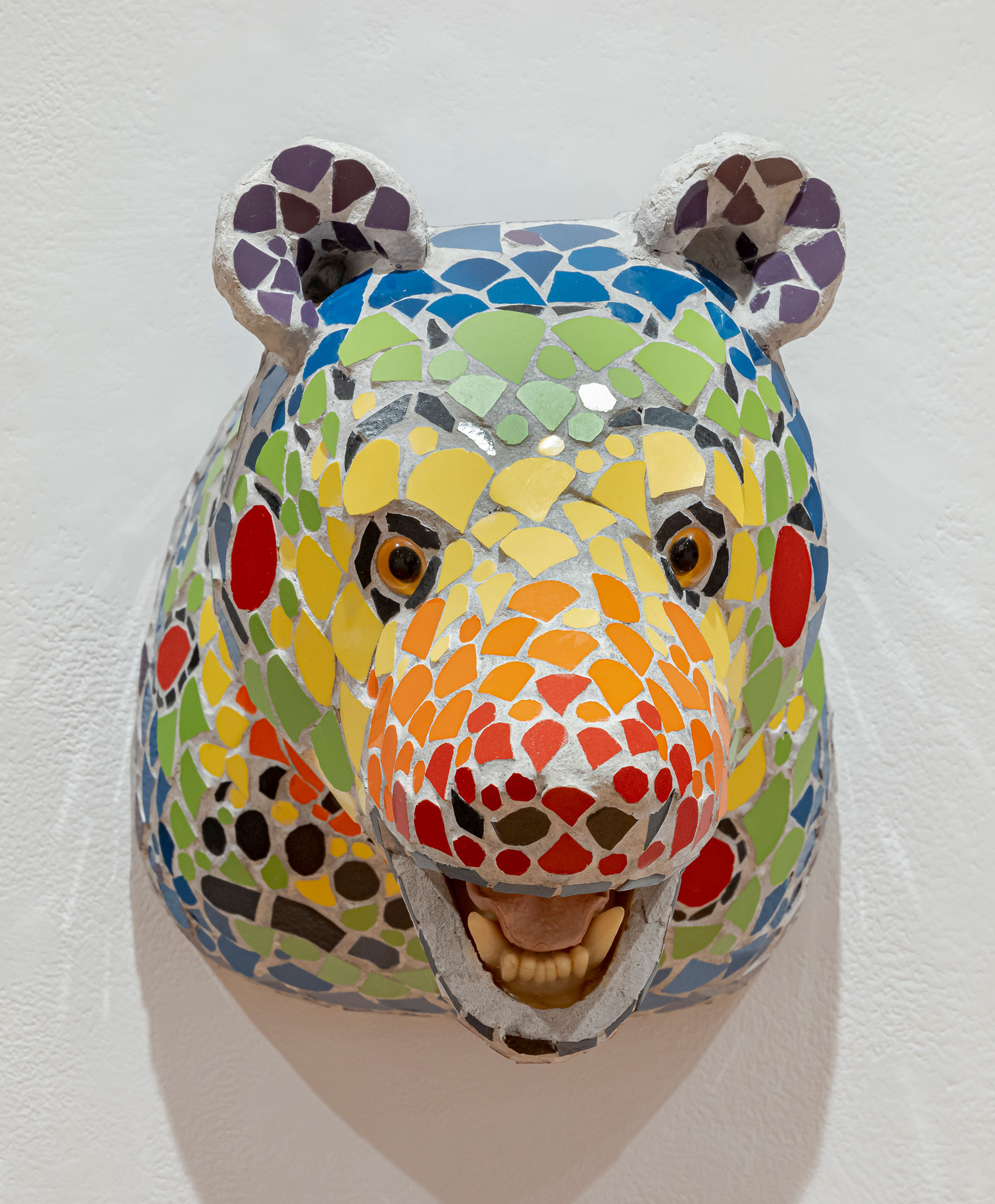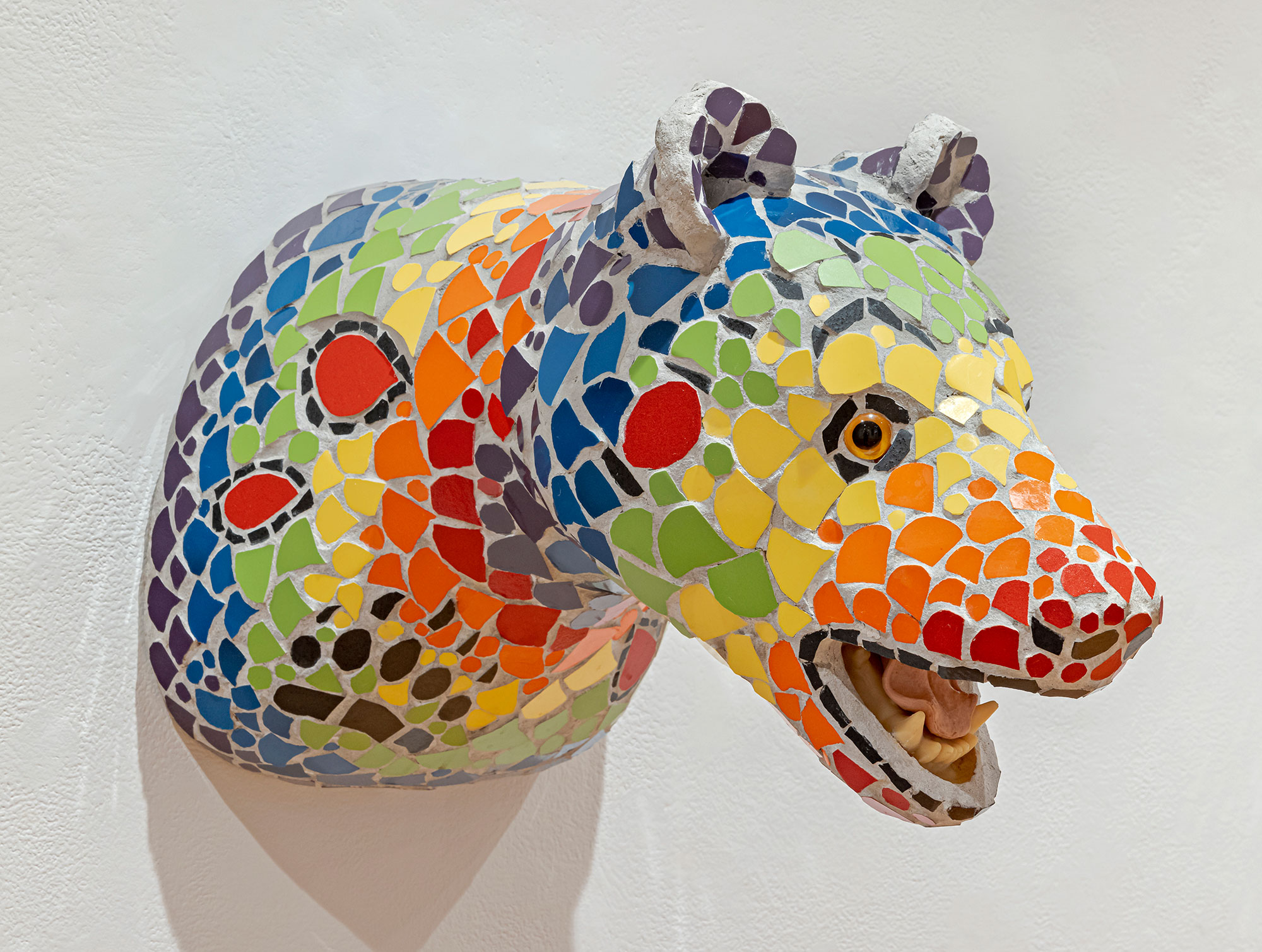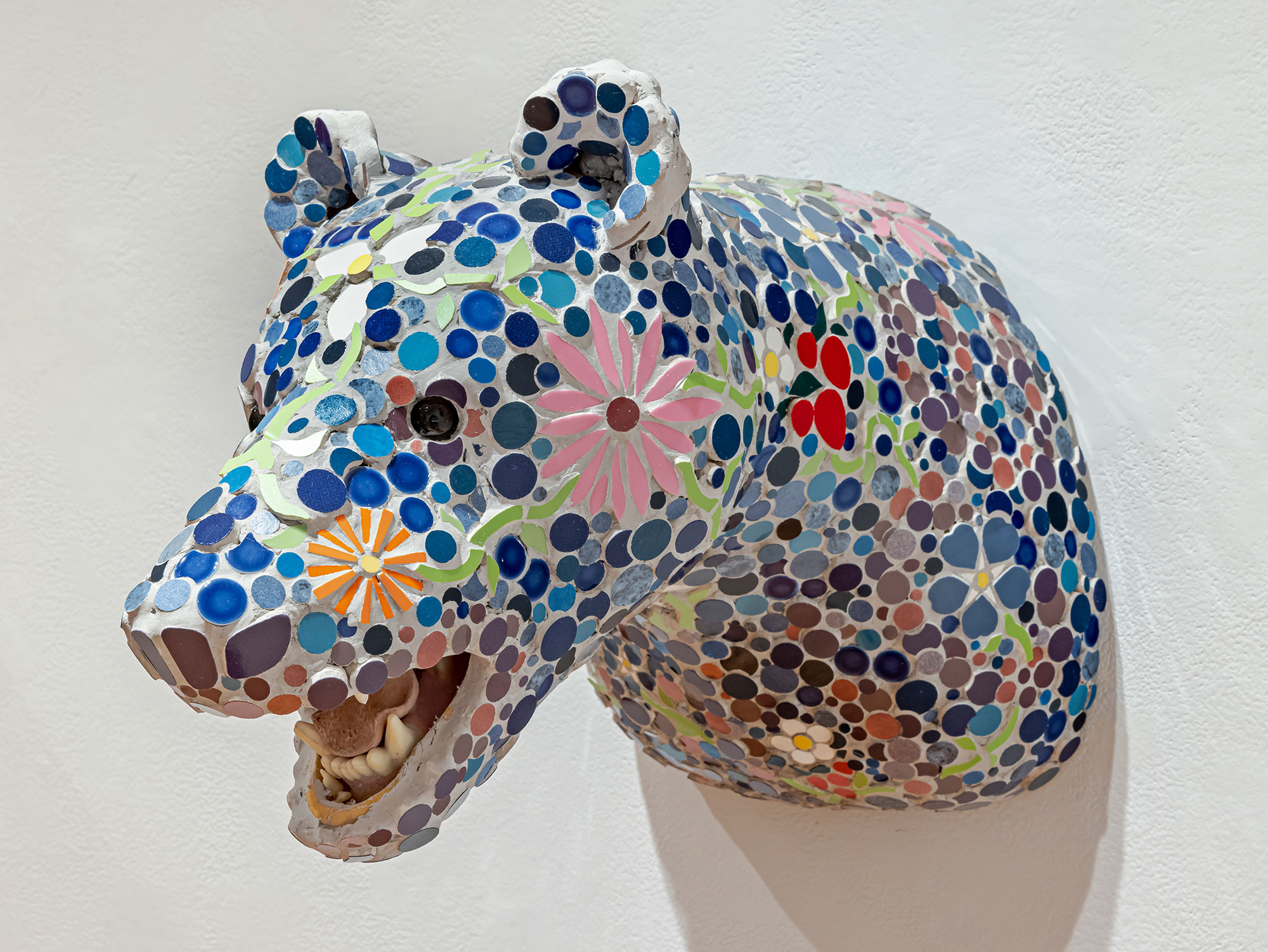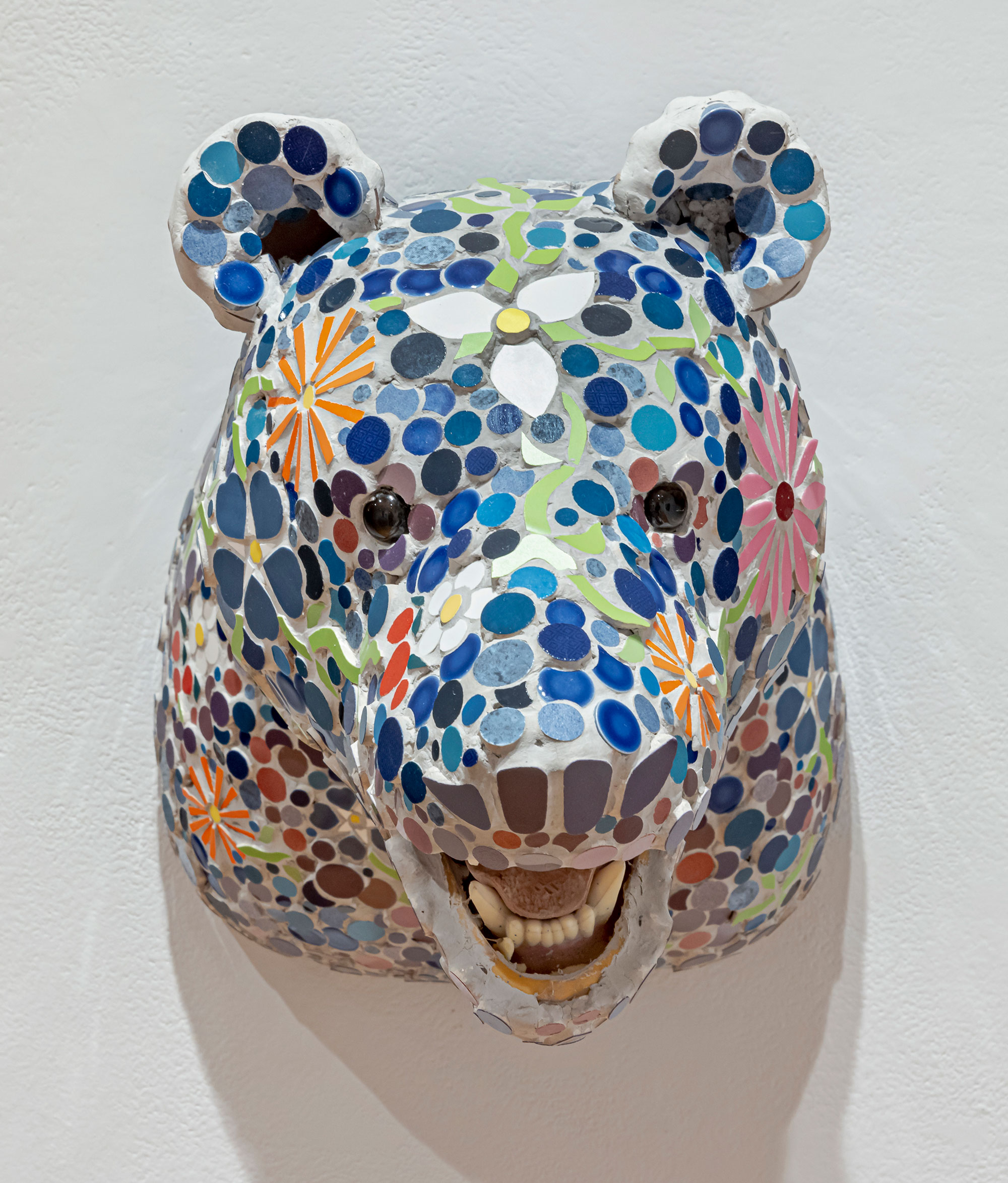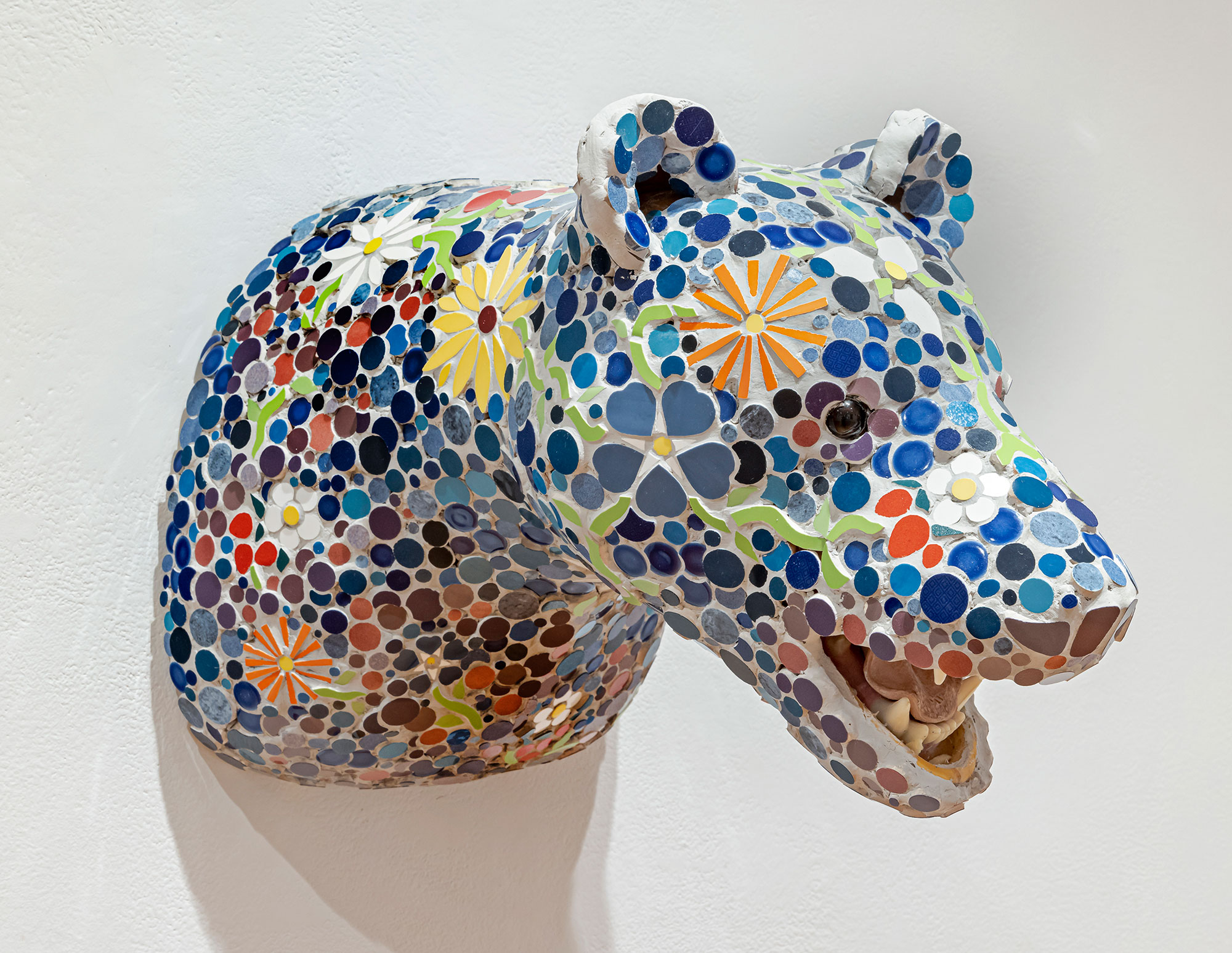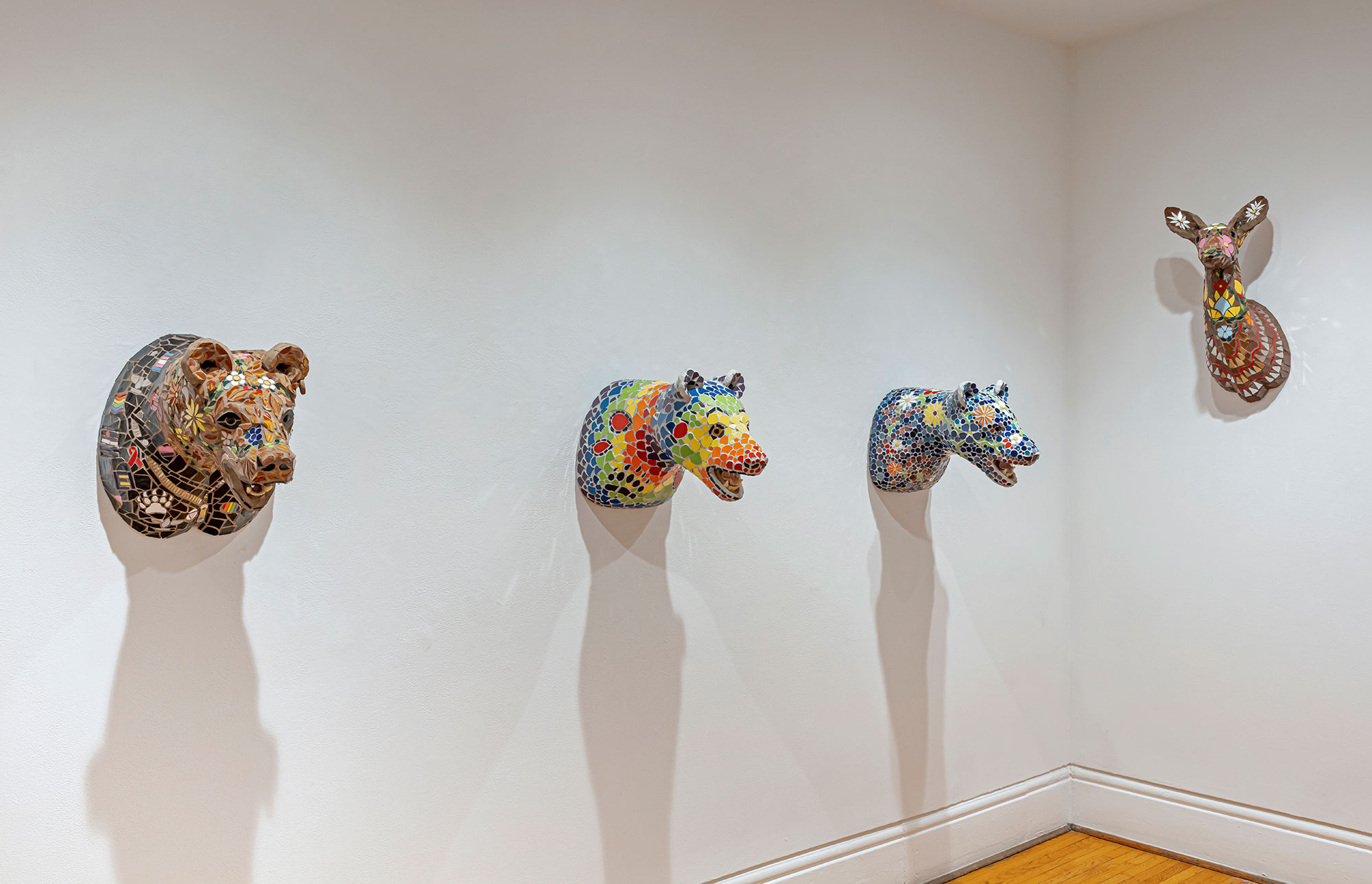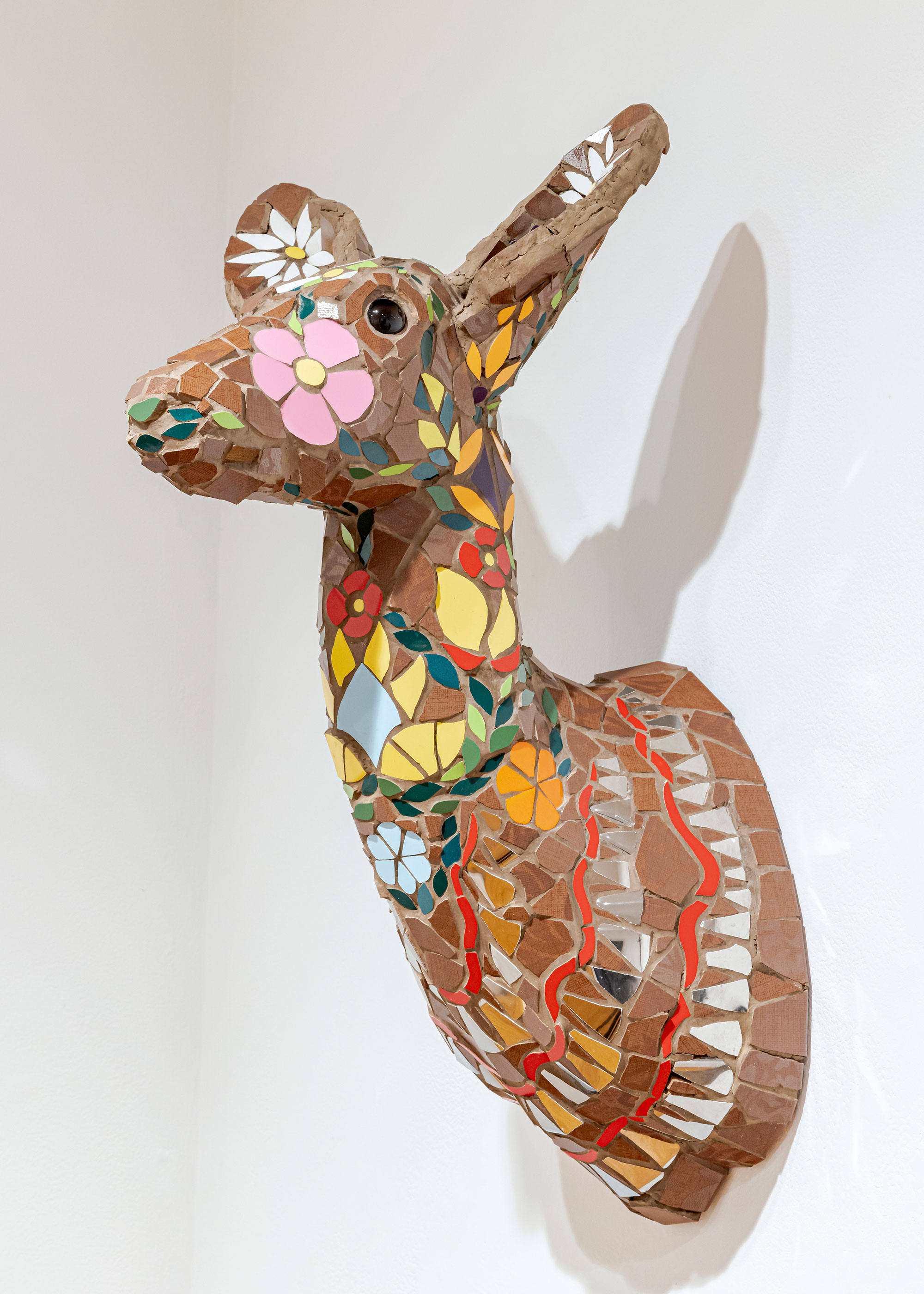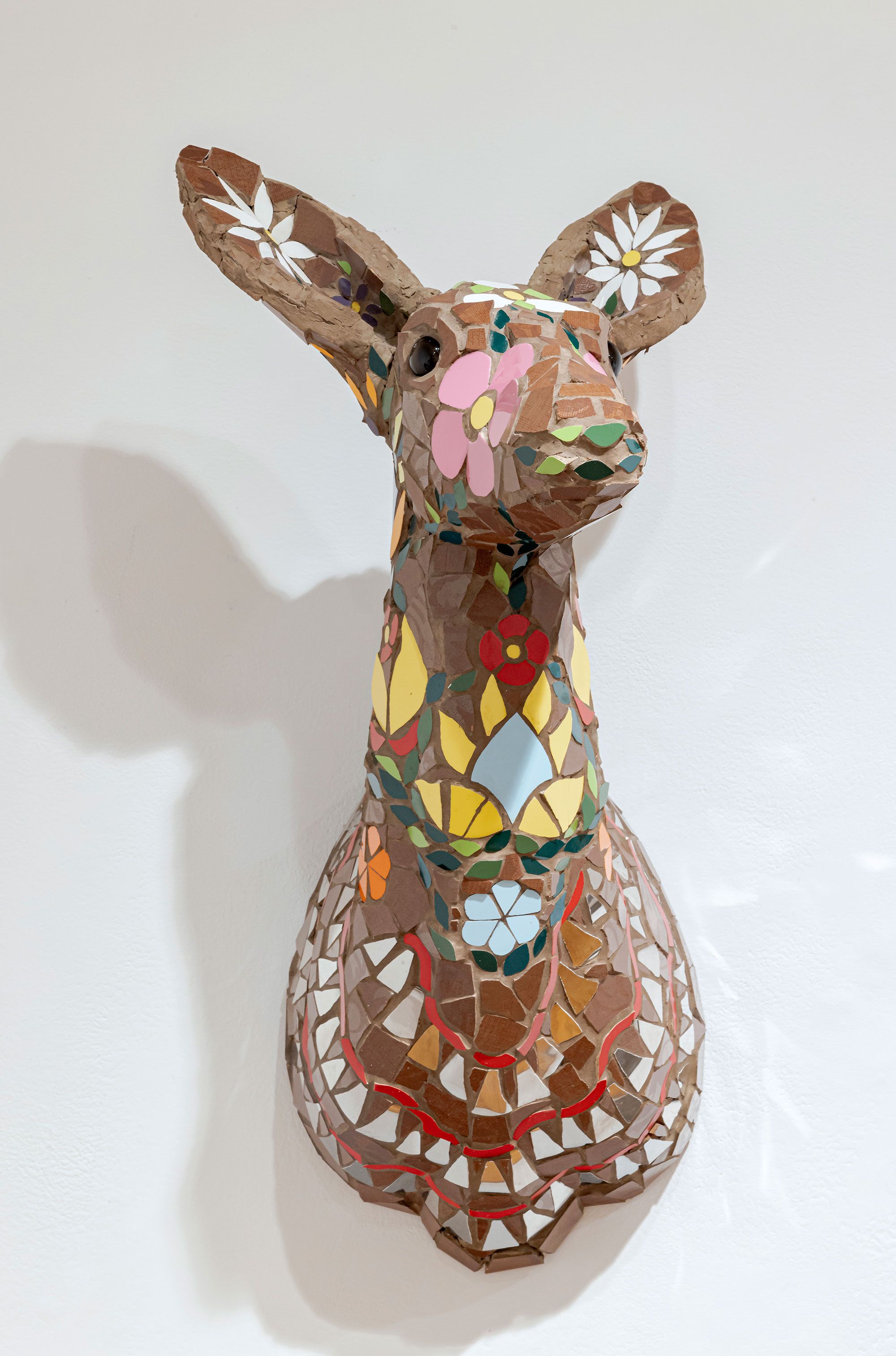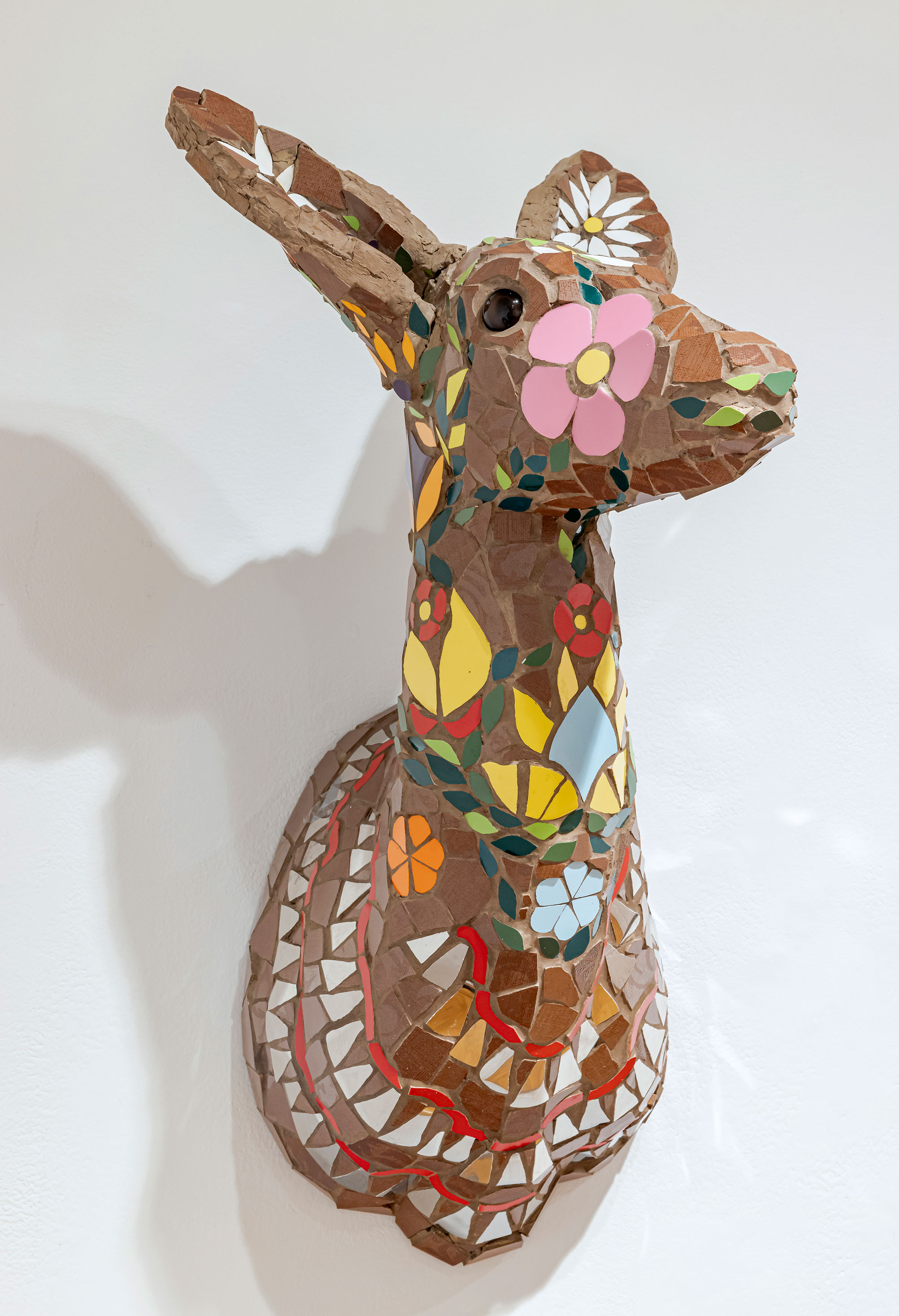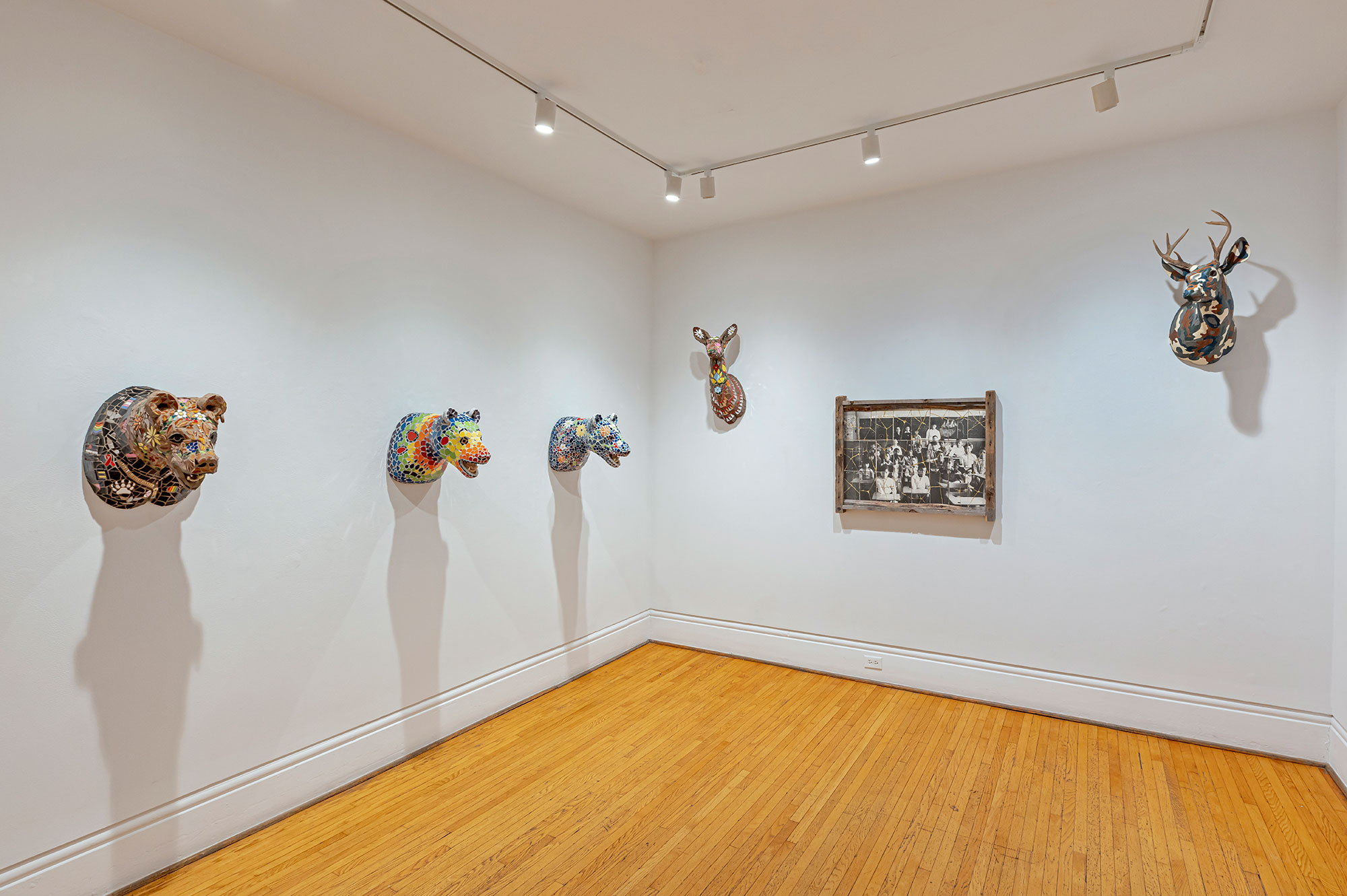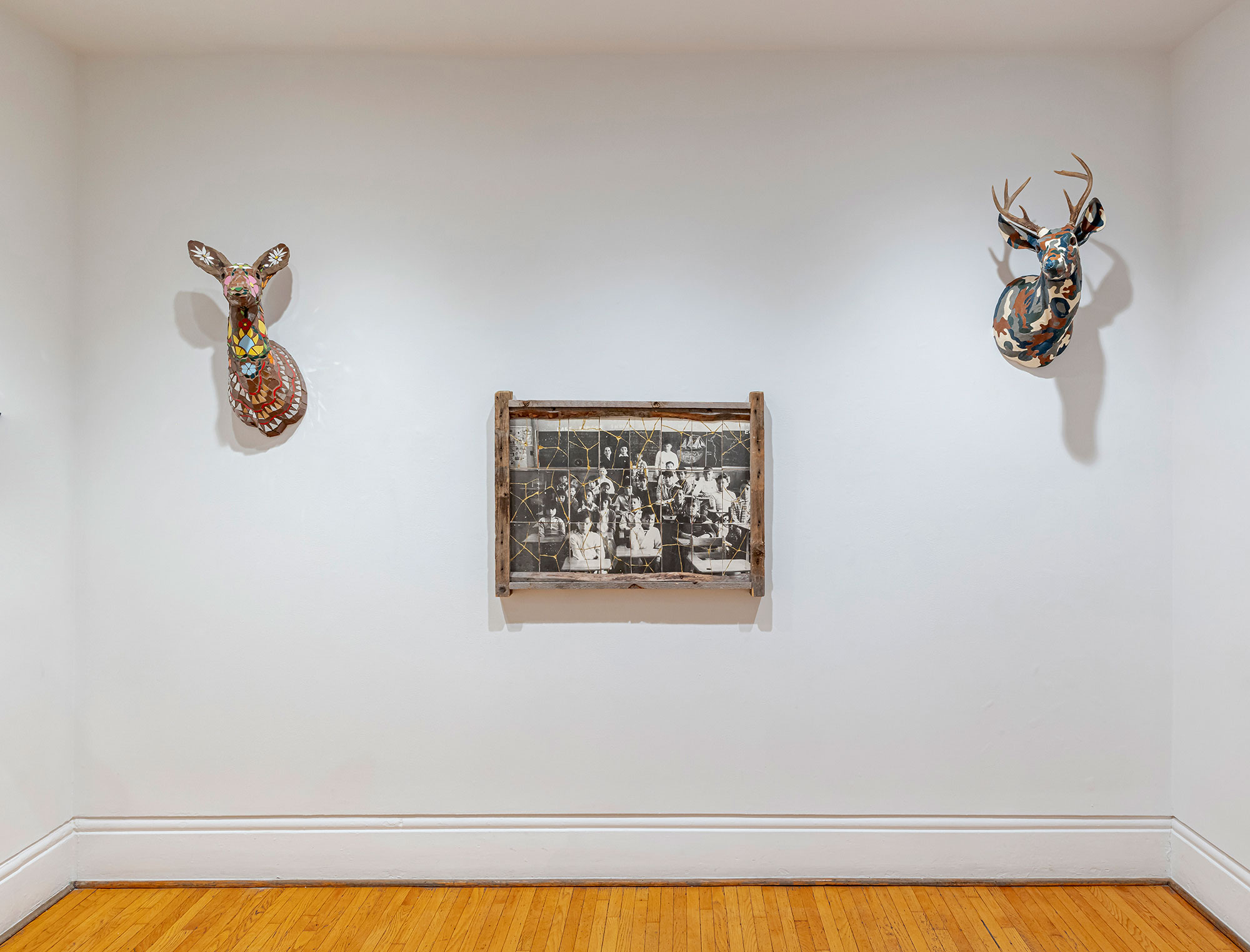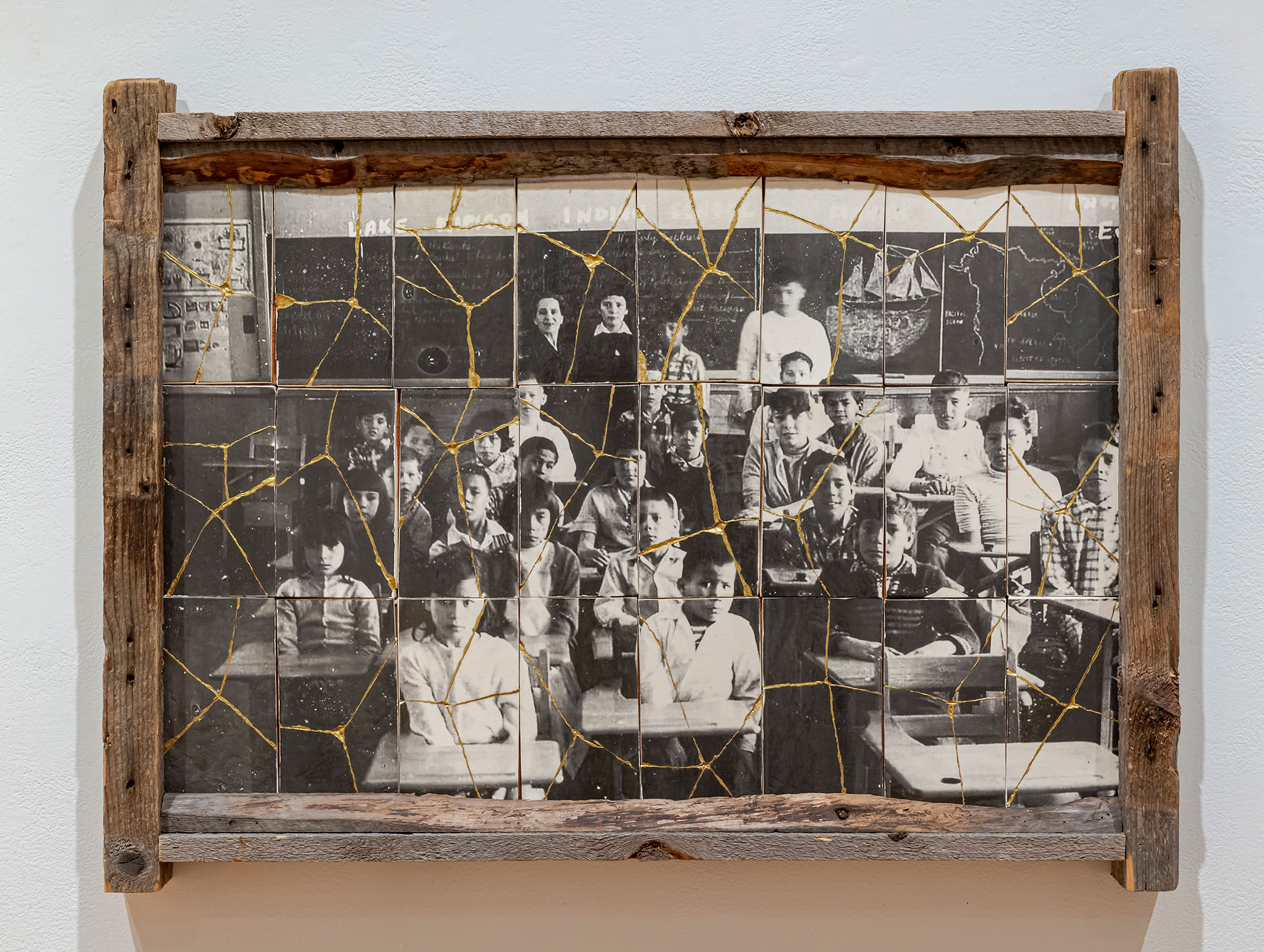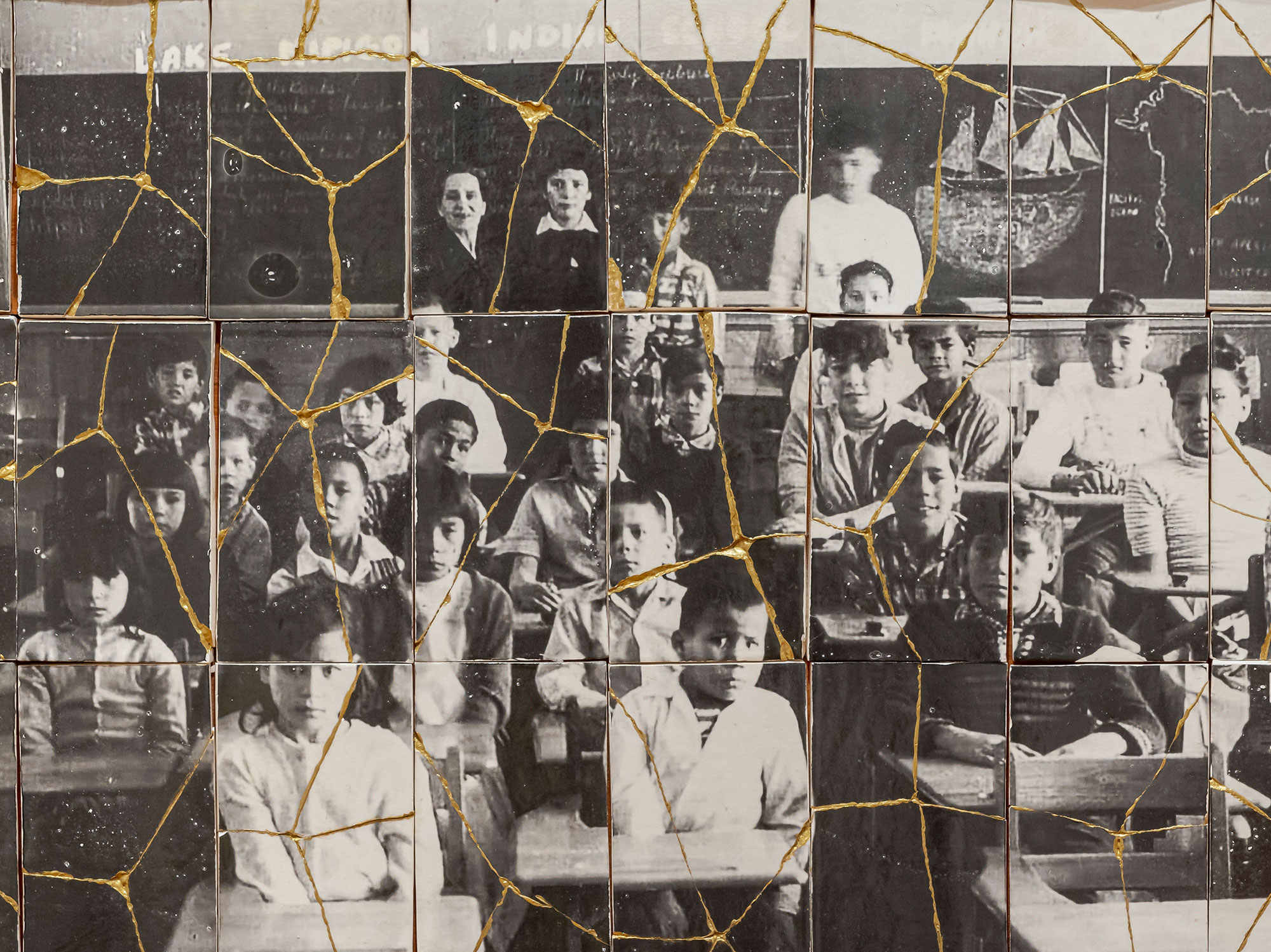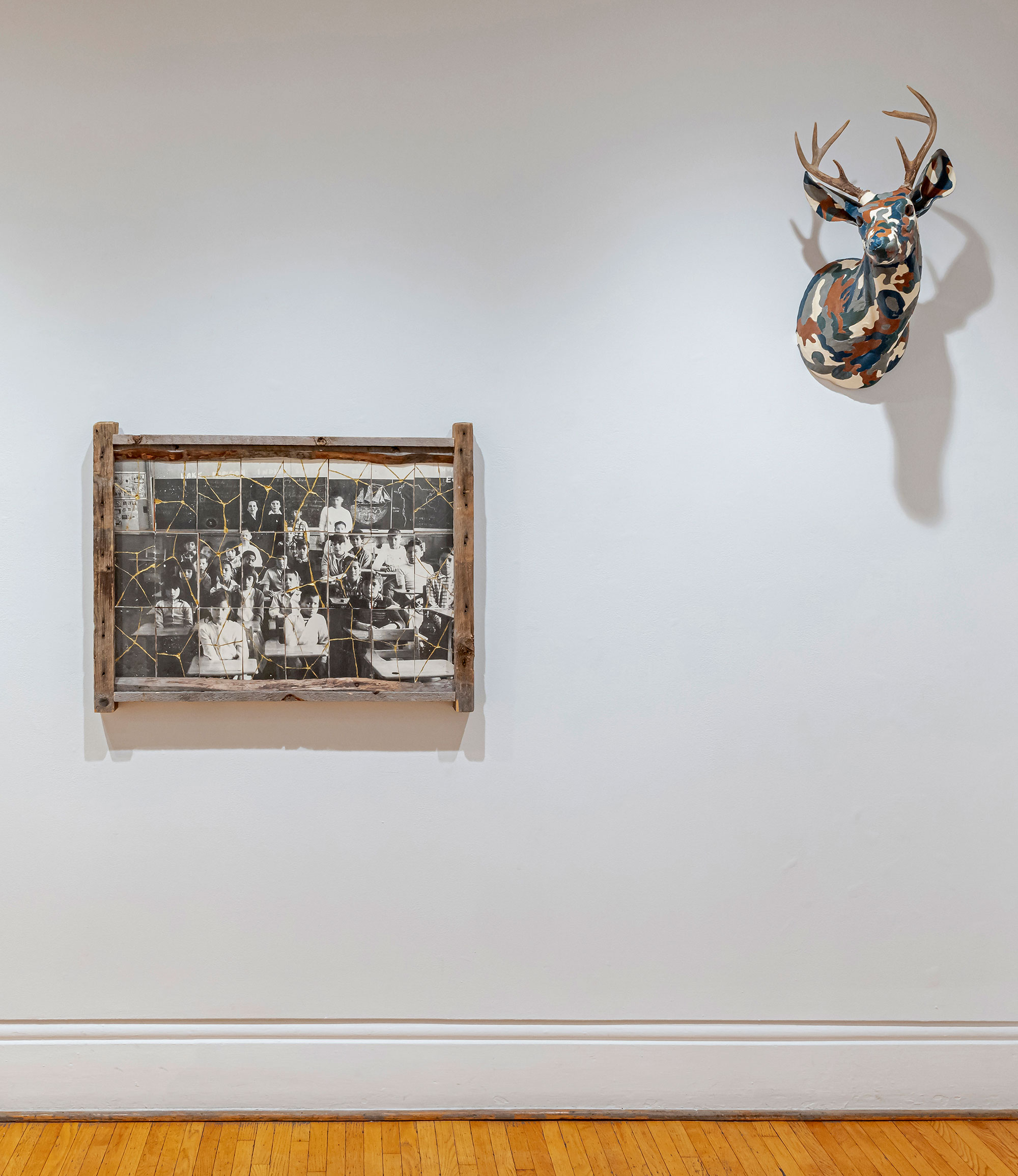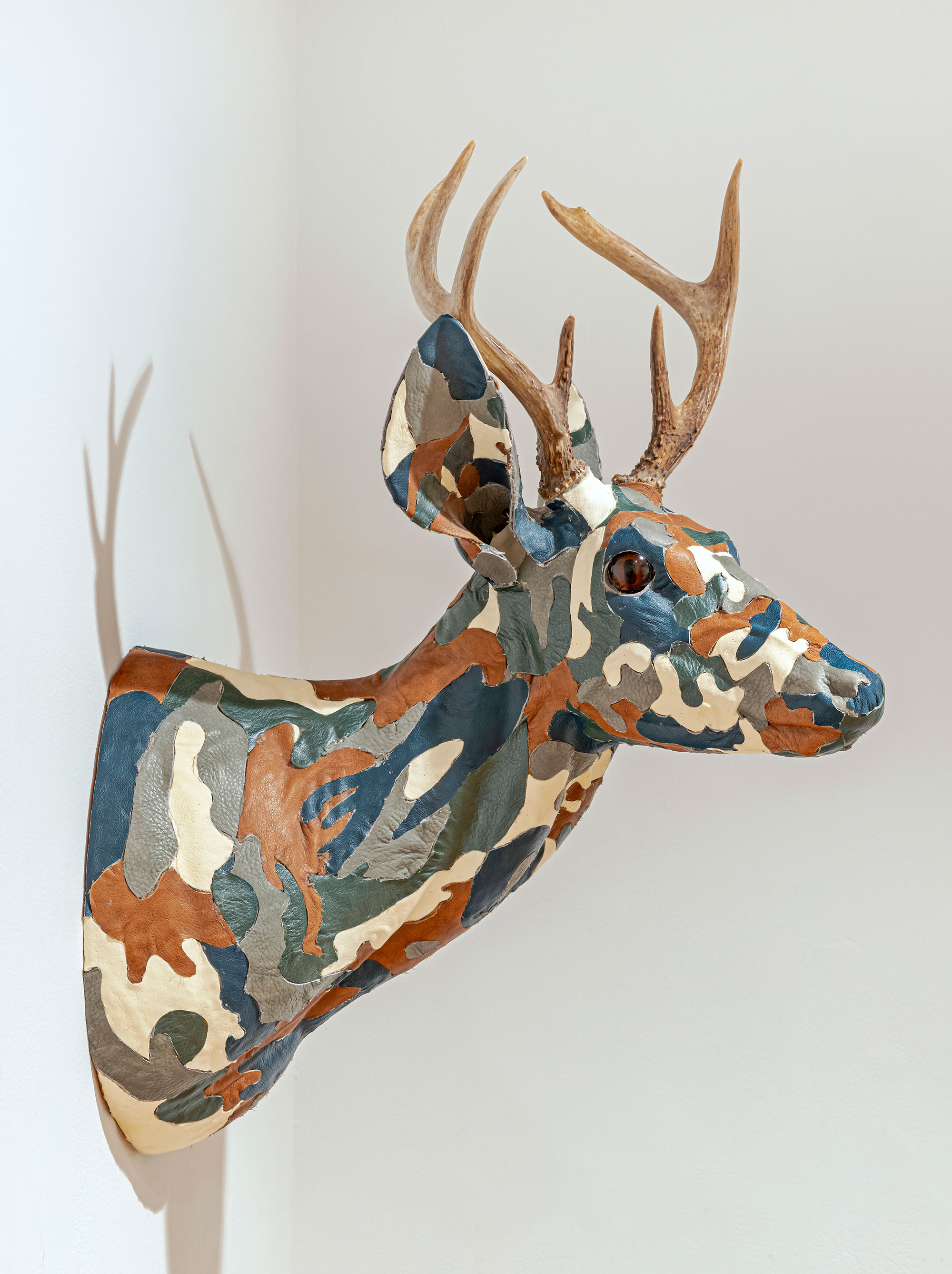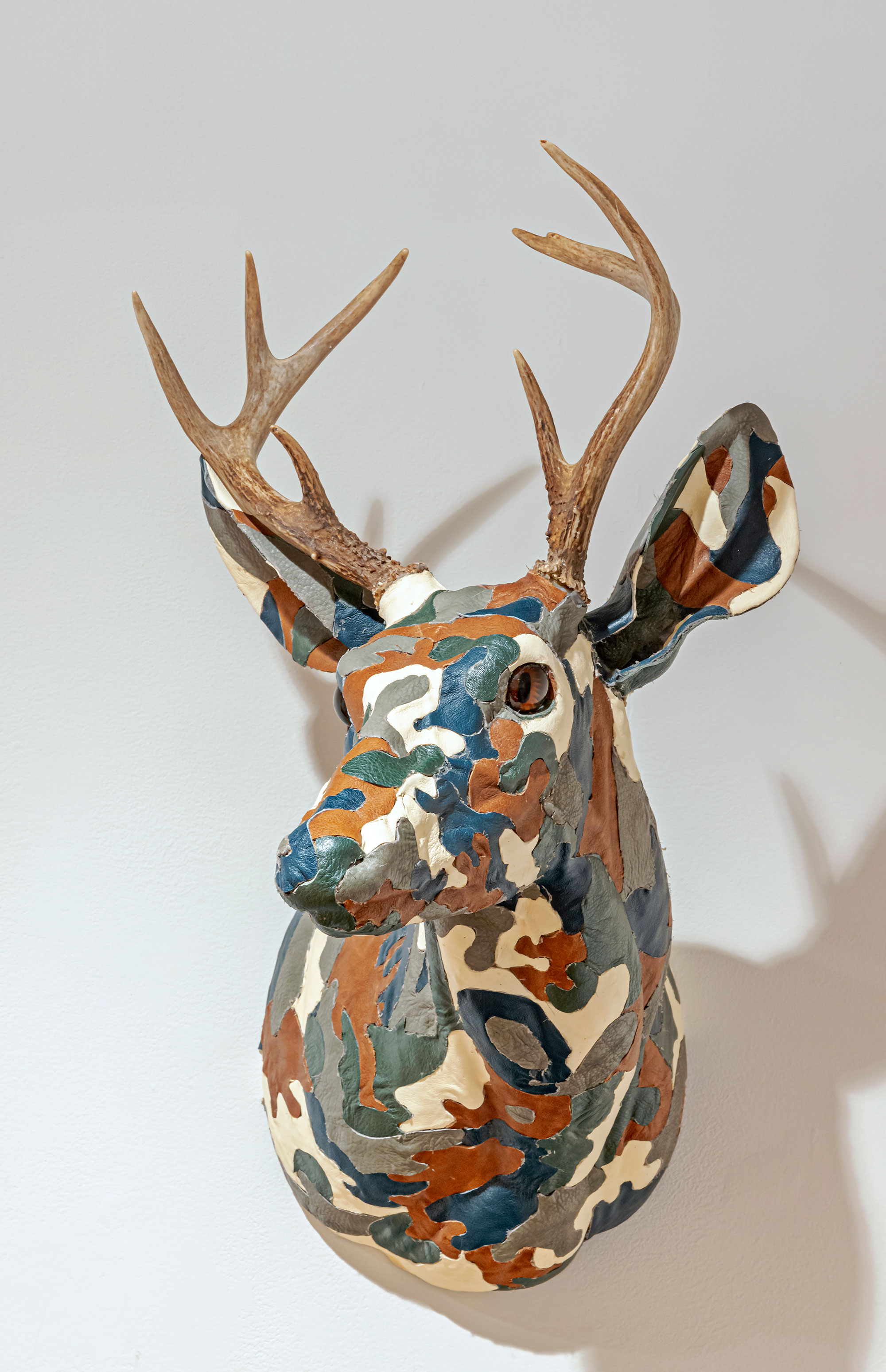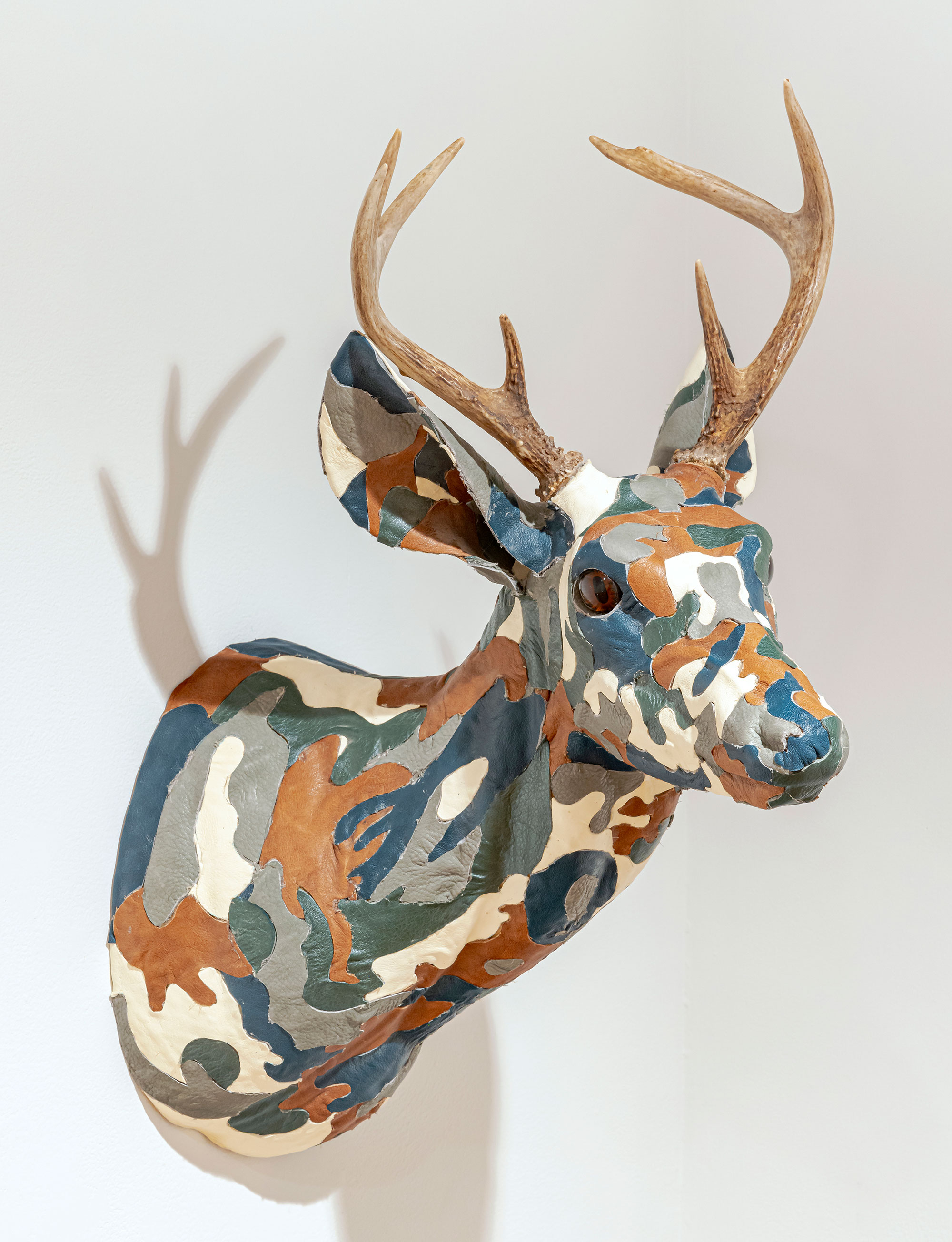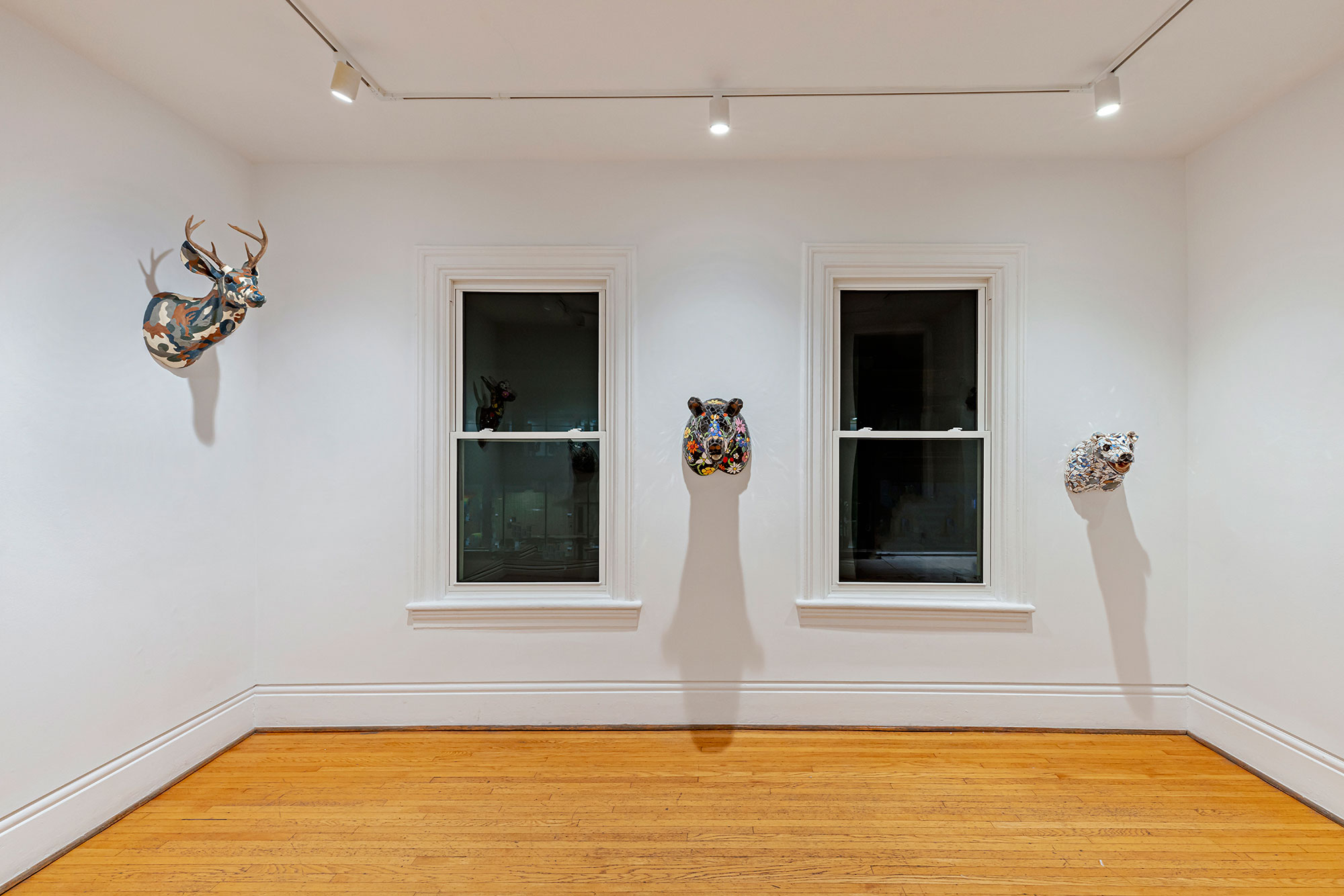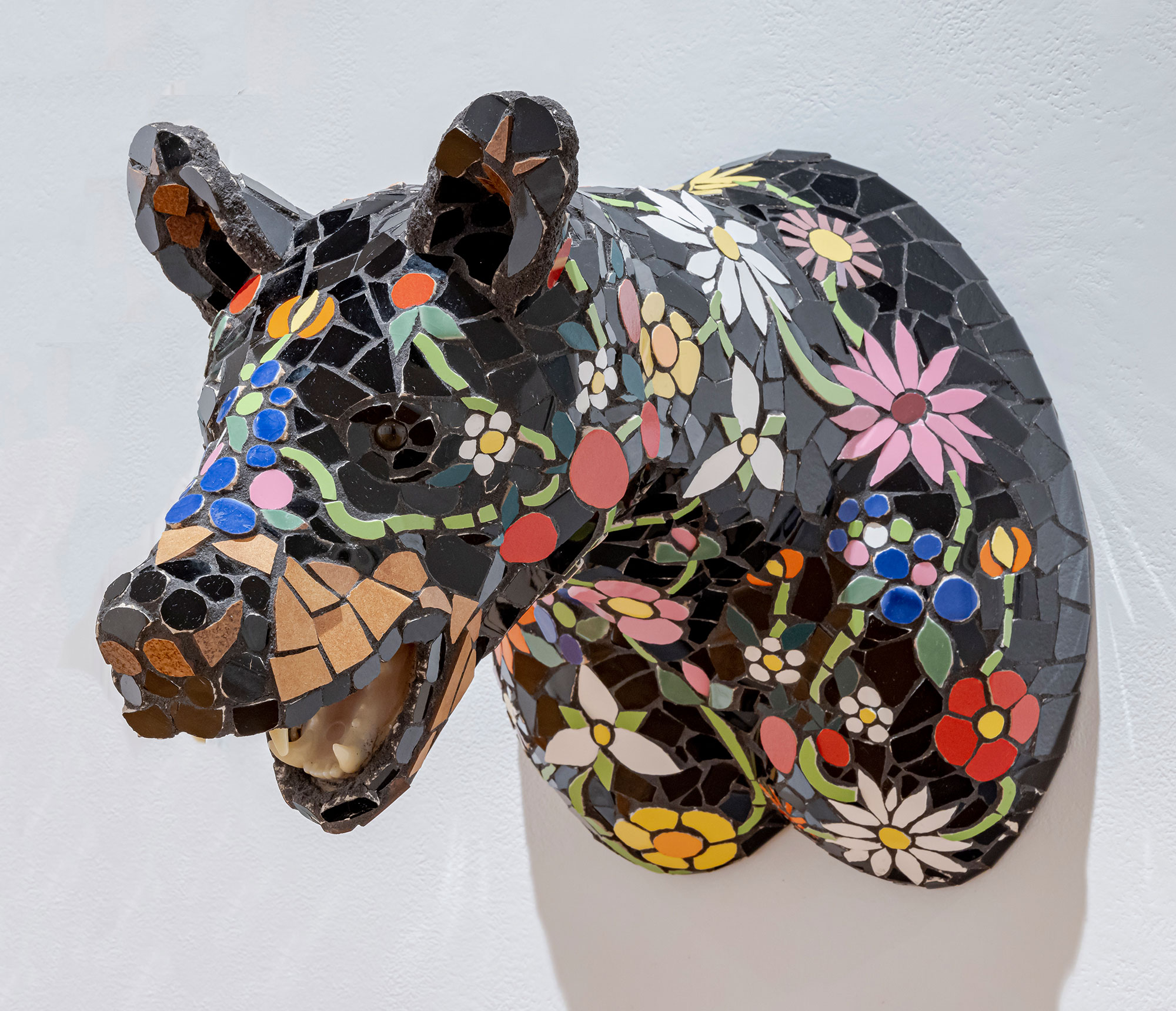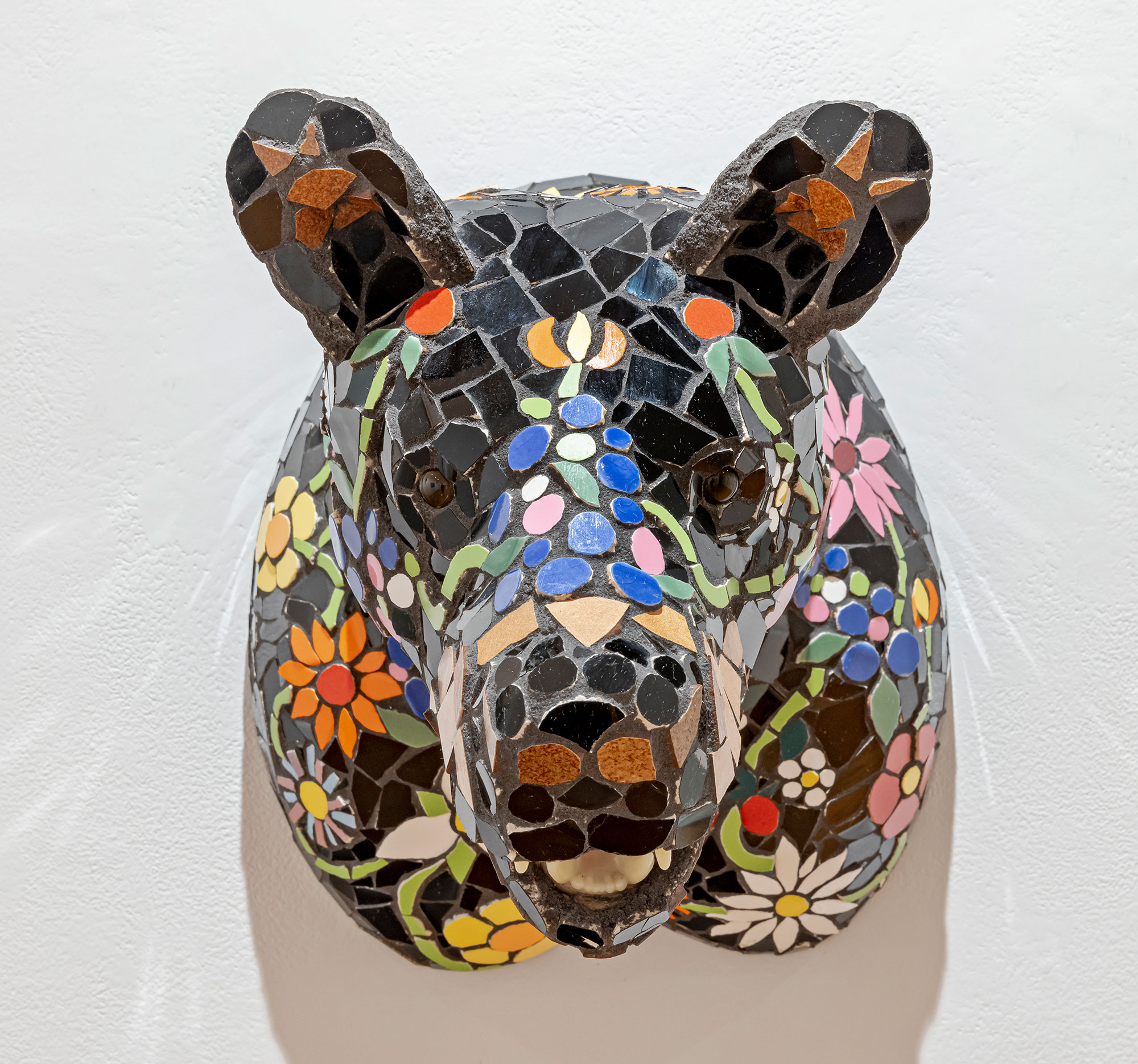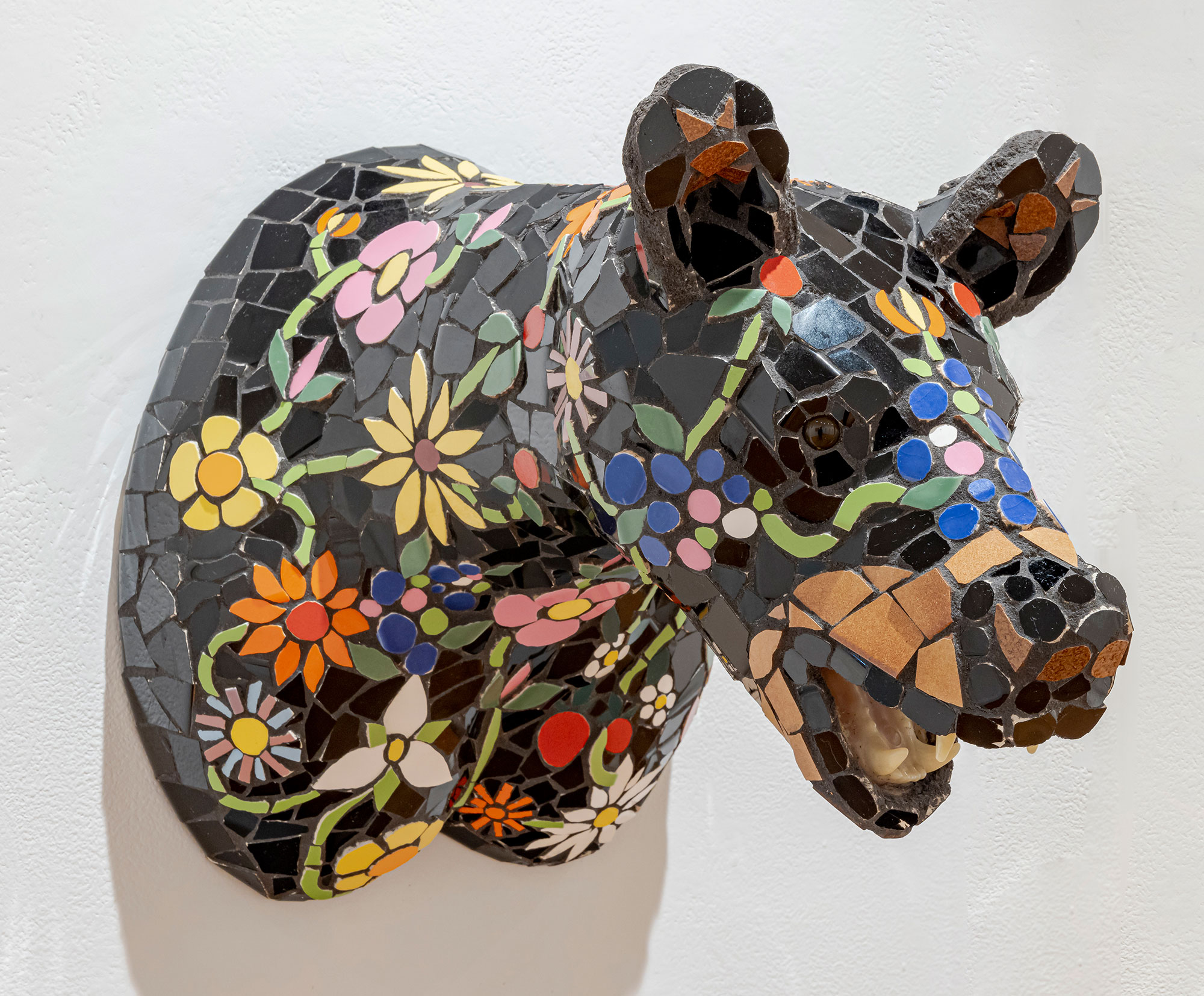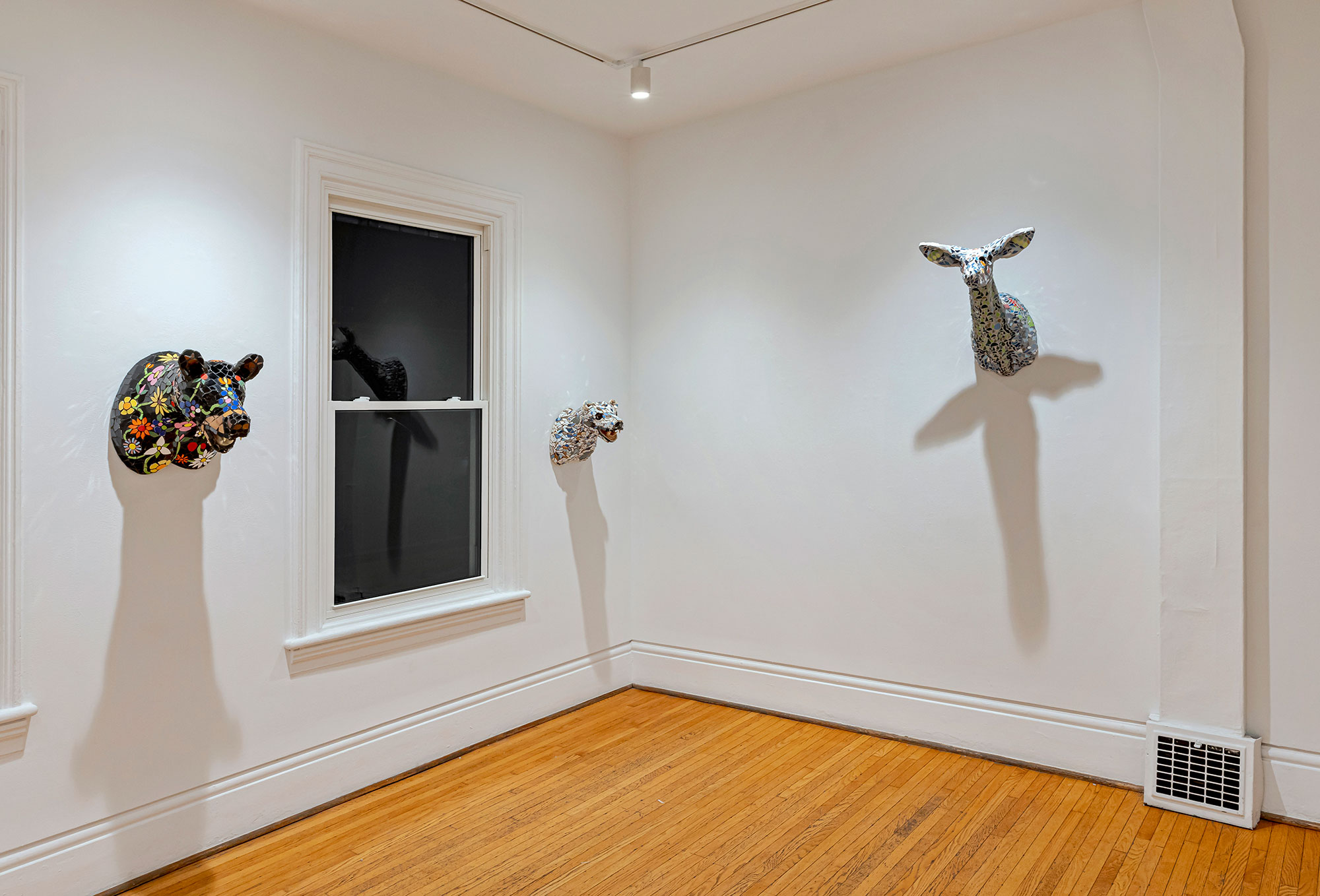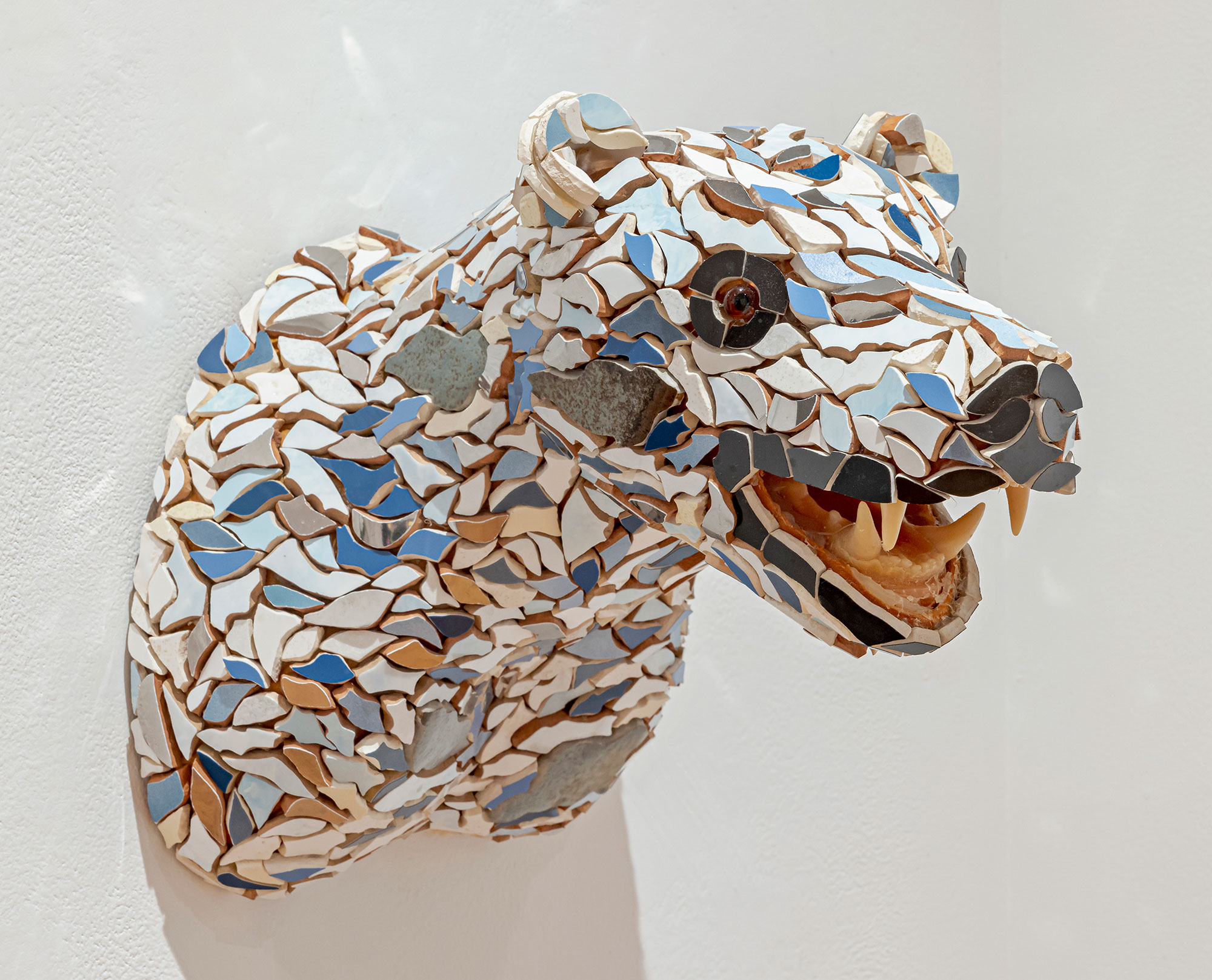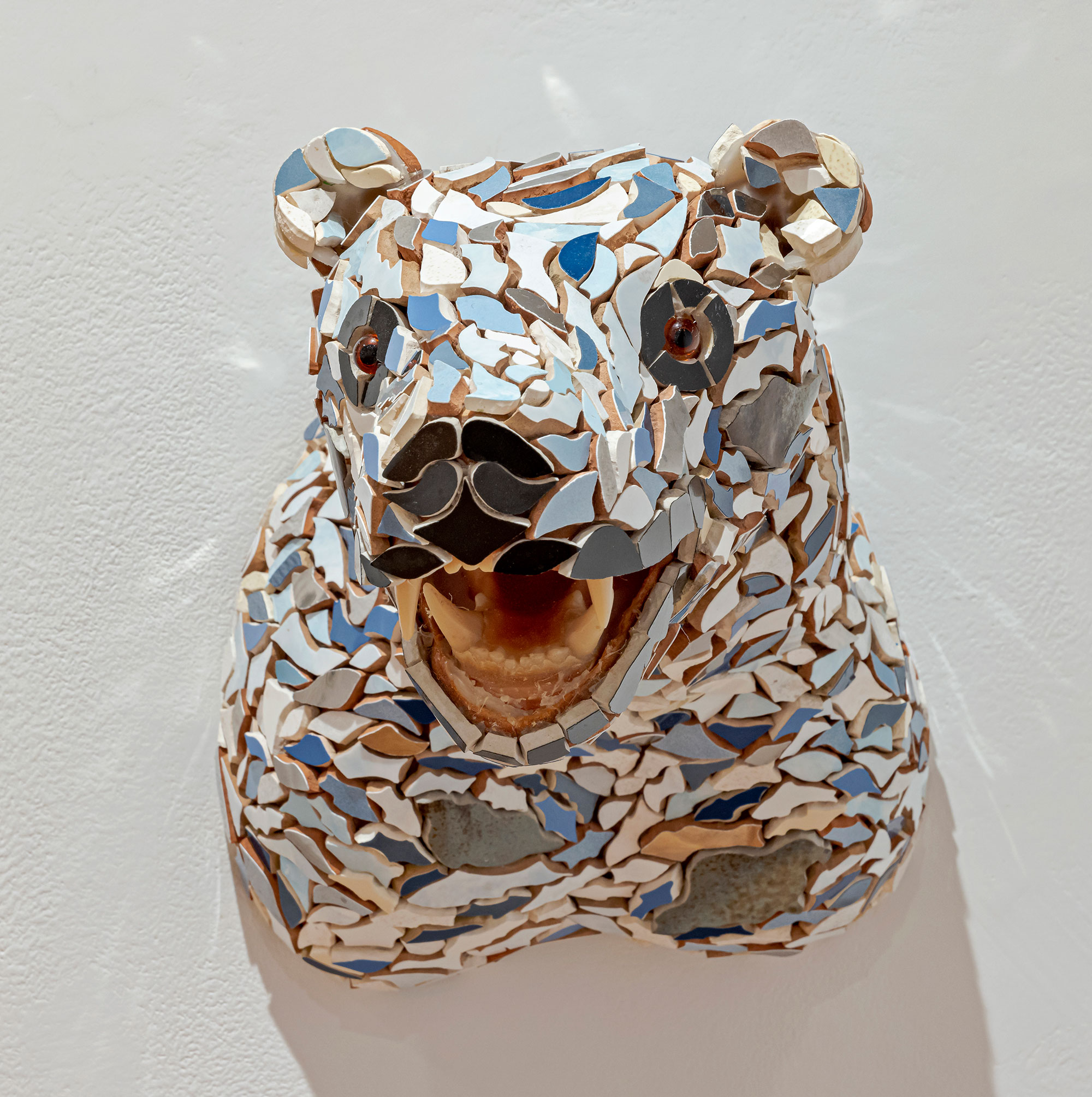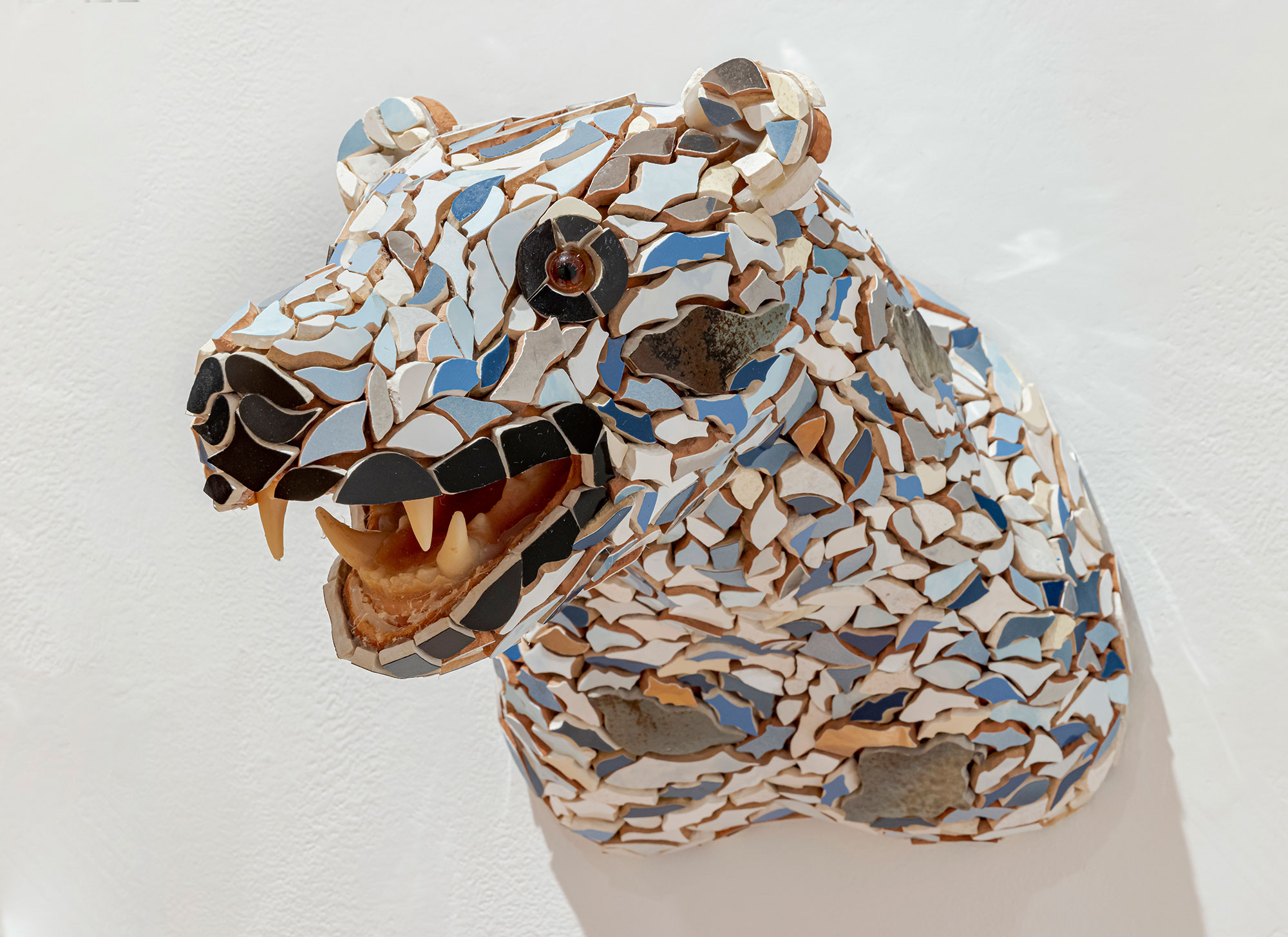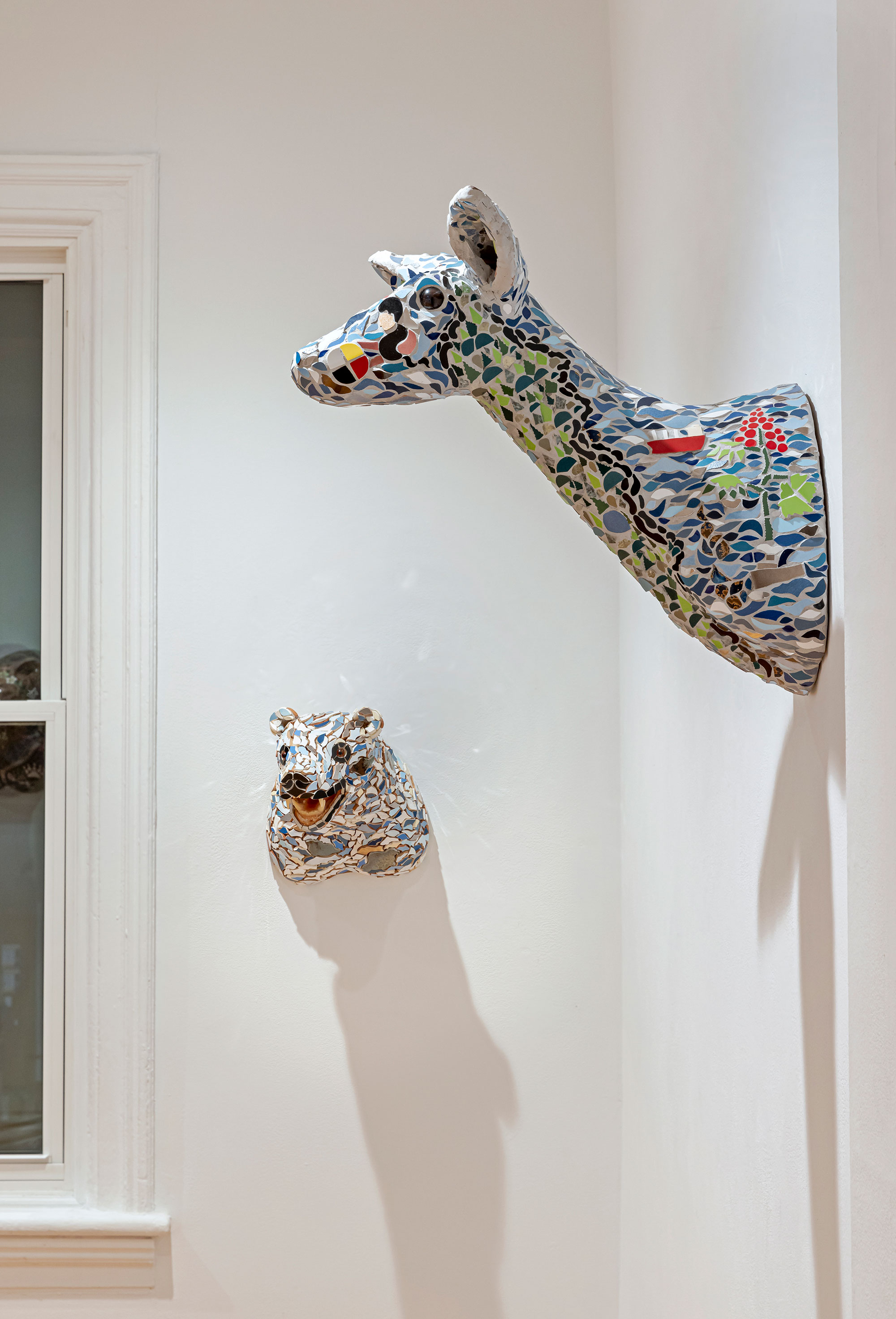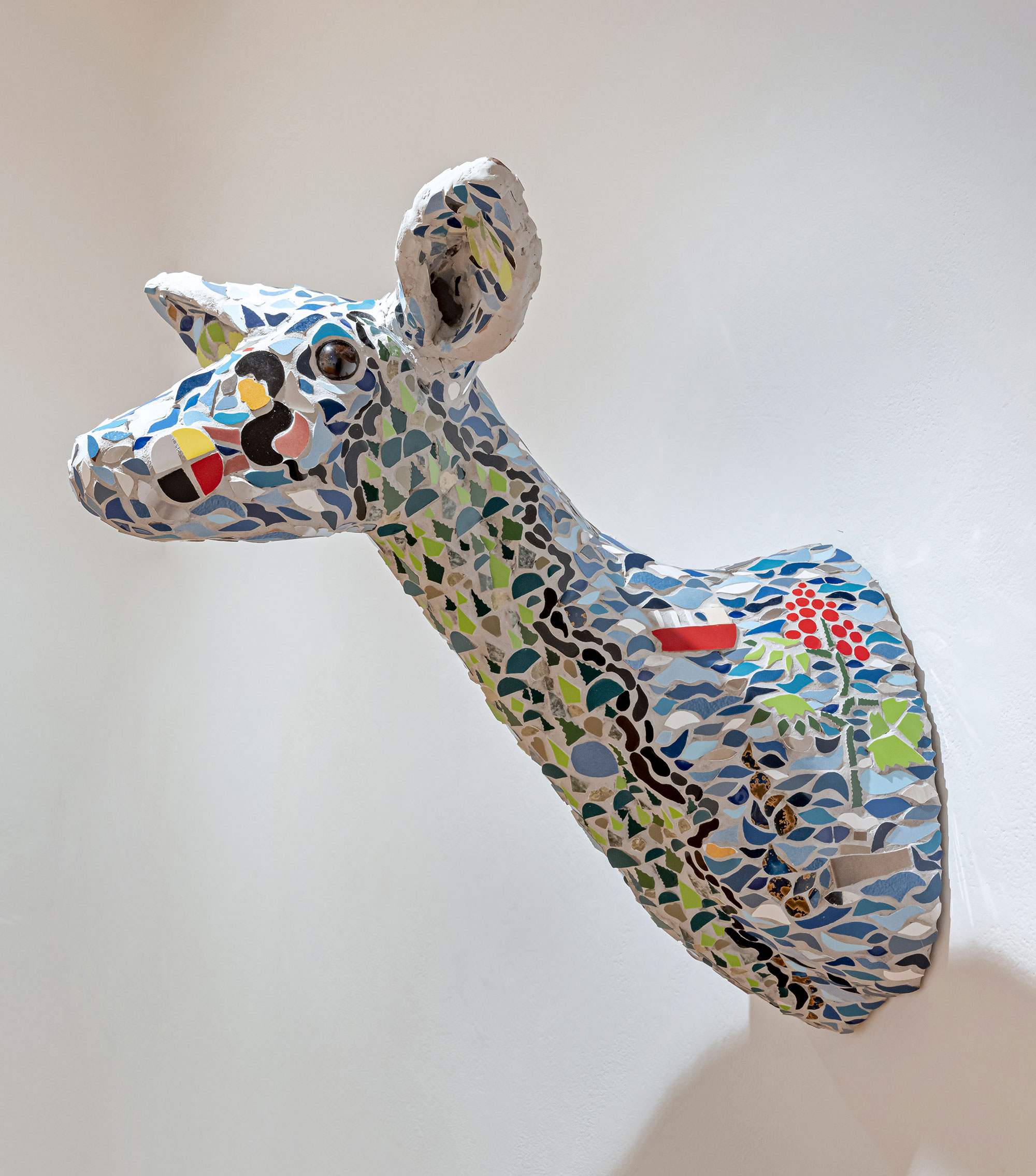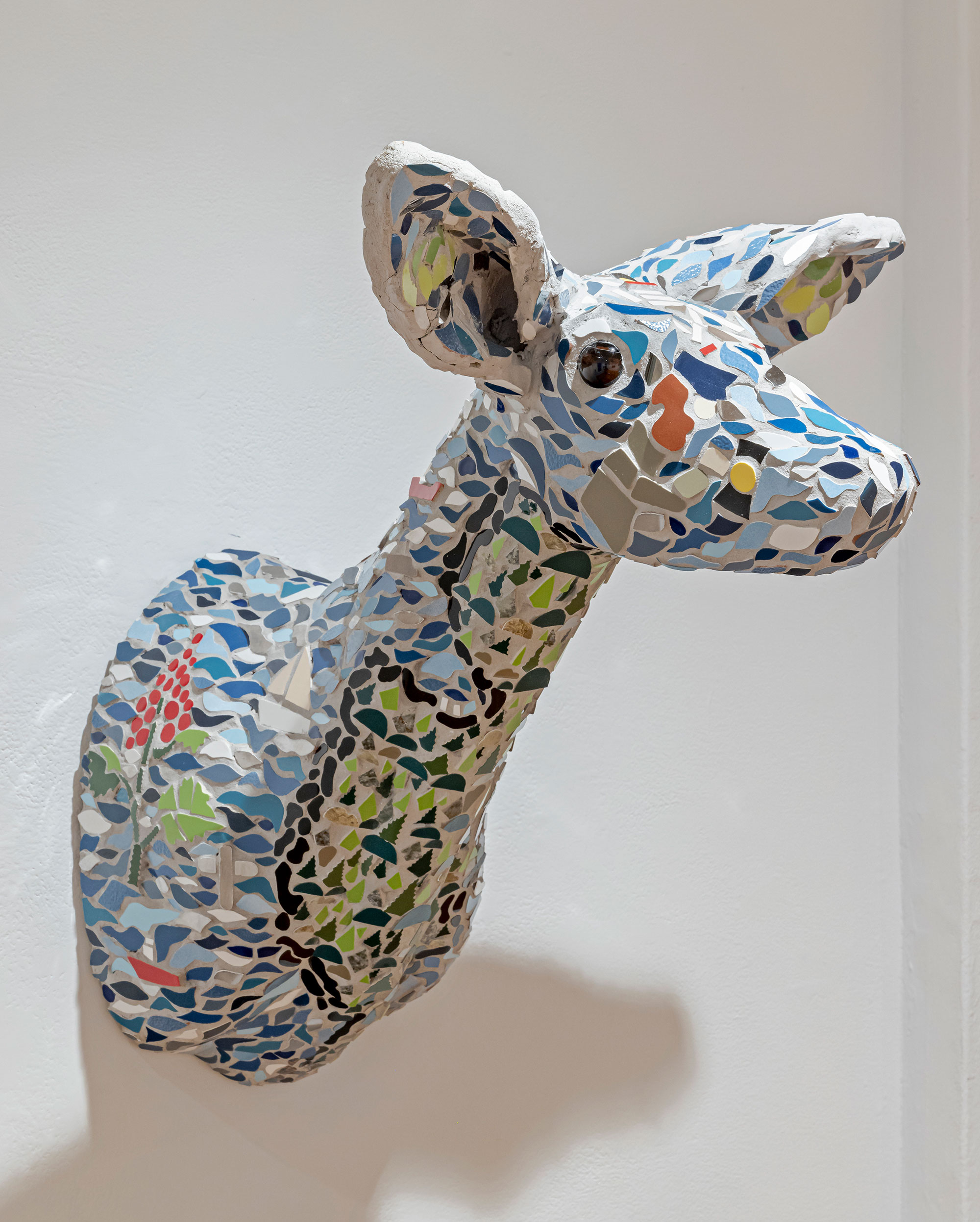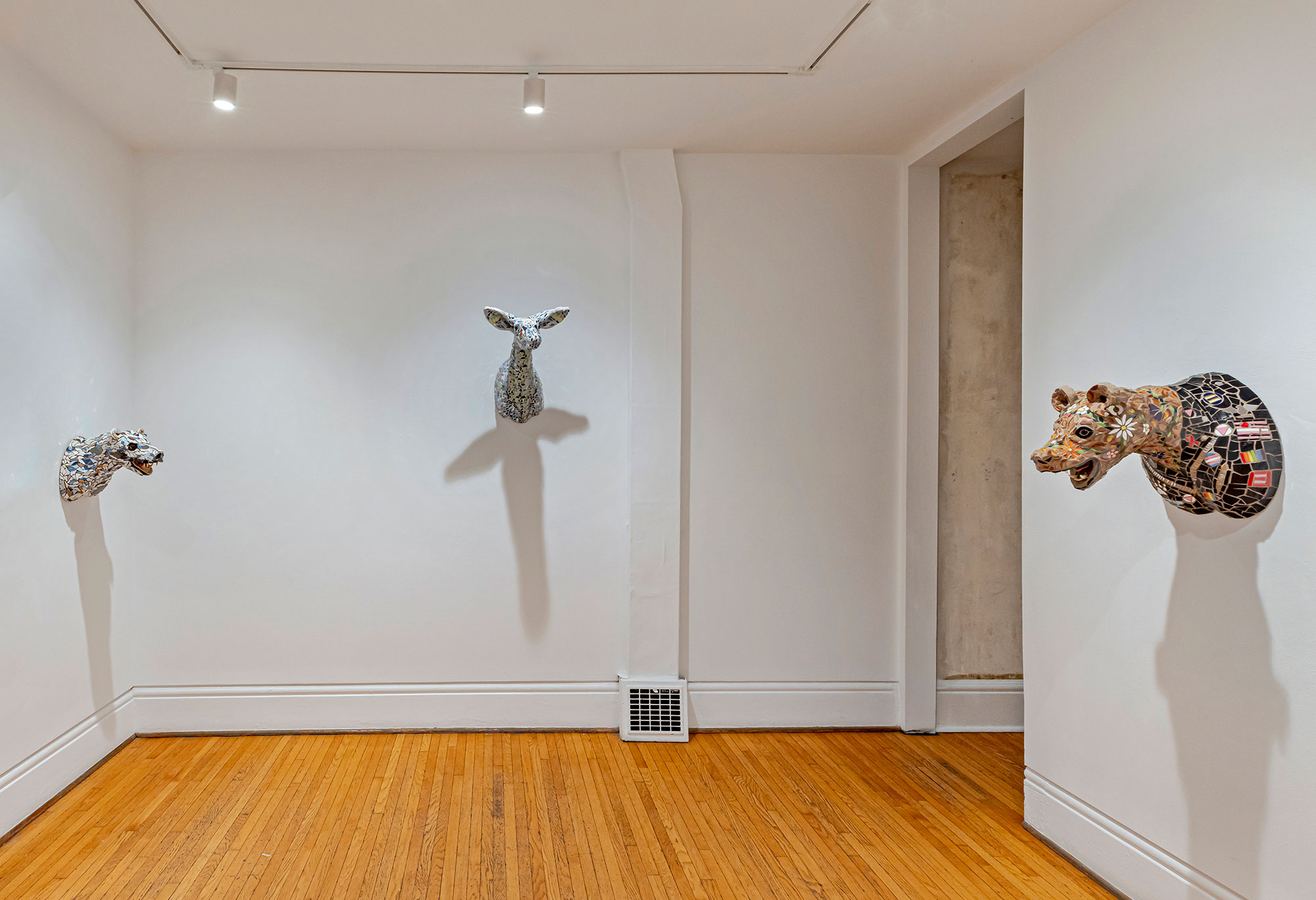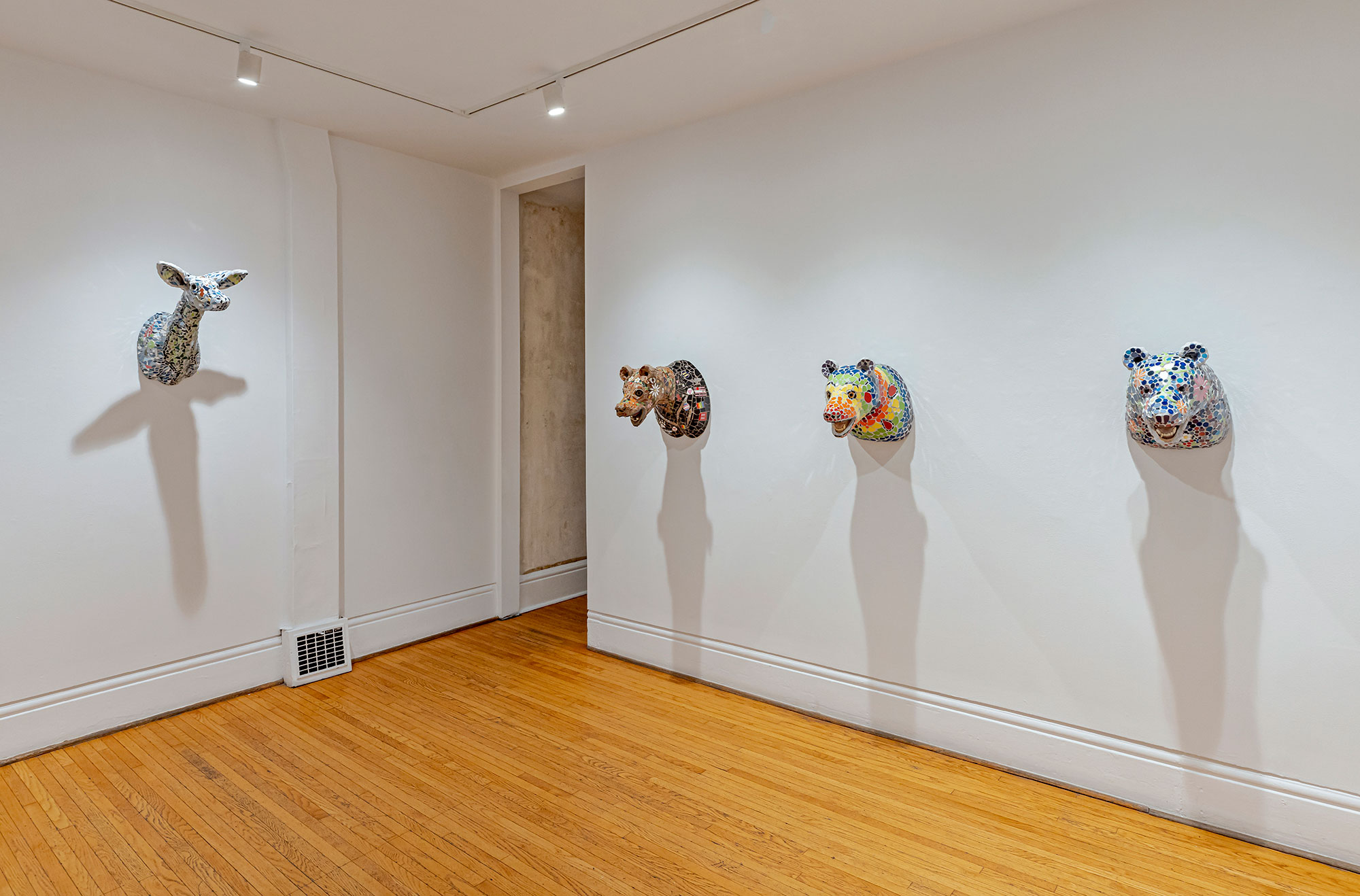Mukwa Dodem
Michel Dumont
(I am bear clan)
May 19 - June 24, 2023
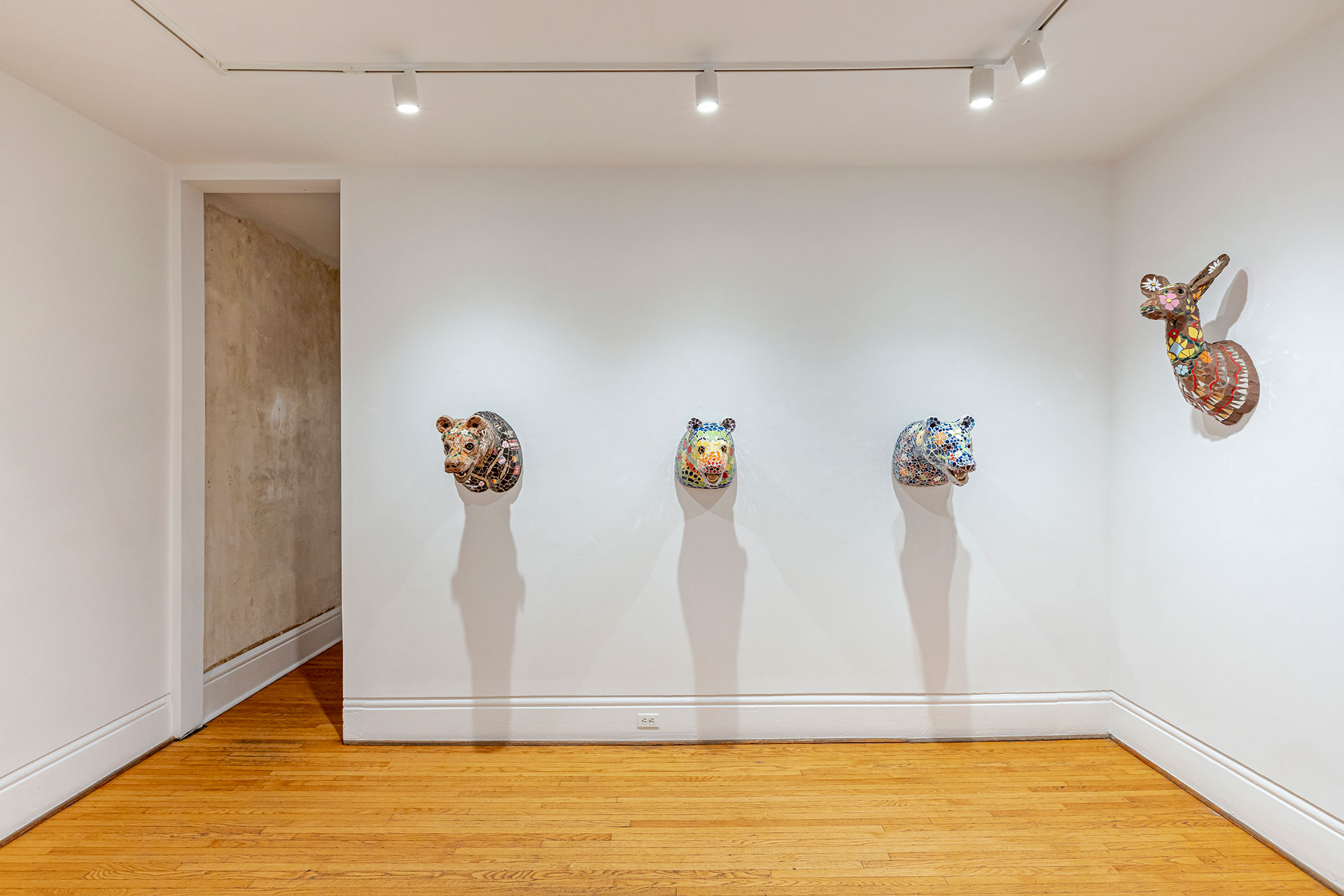
Paul Petro Contemporary Art is pleased to present our first exhibition with Michel Dumont. Mukwa Dodem means 'I am bear clan'. The exhibition focuses on a range of animal mosaics produced from 2017-2022. Dumont explains, 'It is an exploration of the clan system and legends in a modern way." The exhibition also features a major tiled work, Mission Indian Day School, based on his mother's classroom photograph. We are presenting this work in conjunction with the Scotiabank CONTACT Photography Festival.
Michel Dumont self-identifies as a queer, Métis, Two-Spirit, disabled artist and trauma survivor based in Thunder Bay, Ontario. He studied Visual Arts and Psychology at Lakehead University (1986 -1992).
In his words, Dumont “specializes in breathing new life into discarded vintage tile in striking mosaic pieces. I also create wearable art using packing tape, cellophane and LED lights, as well as exploration in installation art. As a survivor of intergenerational trauma stemming from Indian Day School, my work often explores emerging themes in anti-colonial urban indigenous and queer identities.”
Dumont has exhibited widely in group and solo exhibitions in Ontario, Quebec and Manitoba. In 2018 he was recognized as Visual Artist of the year by Thunder Bay Arts & Heritage. He has received two residencies at the Banff Centre for the Arts & Creativity (2018, 2021), an artist fellowship at the Leslie-Lohman Museum, NYC (2022), and was chosen as the 2022 Indigenous Artist in the Park, a residency at Allen Gardens, Toronto (2022).
Artwork Descriptions
Banff Leather Pride Bear
The Banff Leather Pride Bear is a ‘they’ bear which Michel made in 2018 during his ceramics residency at the Banff Centre for the Arts and Creativity, where he taught himself how to roll out and glaze ceramic tiles for the brown grizzly fur. This Pride Bear is dressed in a tiled leather jacket, inspired by leather men and Dykes on Bikes, lesbian motorcycle riders during parades, who wore pins of self identity and queer liberation. Michel notes that the zipper around the neck of the bear is hand-carved from 1980s mirrored terracotta tile, and the flowers and vines on the face of the bear denote Indigeneity.
Rainbow Two-Spirit Bear
The Rainbow Two-Spirit Bear, also known as ‘Mukwa’ in Ojibwe, is Michel’s first foray in exploring his intersectionality as an urban queer man who calls himself a bear, an Ojibwe, a French man raised to identify as Metis, and as a part of the Bear Clan. The Bear Clan is a protective clan, Michel explains, which was the influence of this particular artwork made from an aggressive anachronistic taxidermy form with an open mouth and bared teeth – this expression has fallen out of fashion in favour of a closed mouth and more peaceful expression. Rainbow Two-Spirit Bear is tiled with the pride colours, which Michel describes as a “queering” of the figure.
Colour Blind Justice Bear
“In response to Colten Boushie, a 22-year-old Indigenous man of the Cree Red Pheasant First Nation who was fatally shot on a rural Saskatchewan farm by its owner, Gerald Stanley. Stanley stood trial for second-degree murder and for a lesser charge of manslaughter, but was ultimately acquitted in February 2018. A settler farmer stood trial for killing an Indigenous man on his land. I immediately thought of Colten’s mother Debbie Baptiste, and was reminded of my vintage angry open-mouthed, teeth-bared taxidermy Mama bear form. This piece addresses the all-white jury, and their insistence that their version of justice is colour blind. I chose the blue purple shift in the colour blind test pattern, and wrote the word justice on the sides and chest of the bear. The word would be invisible to those who are truly colour blind. I chose to further obscure the letters with a healing carpet of vines and berries to make justice even harder to find for the average viewer, and to try to provide comfort to Colten’s family. Using those symbols to wish healing for his loved ones. Ideally we want justice to be colour blind, but it needs to be cognizant of colour. It then does a disservice to marginalized communities if their history and lived experience is not taken into account.” — Michel Dumont
Jingle Dress Deer
Oijbway:
Zaangwewe-magoonday (jingle dress)
Waawaashkeshi (deer)
“I made this dancing doe to honour the Ojibway women in my family. The jingle dress appeared in the 1920s in Northern Minnesota and in the Canadian Rainy River area almost simultaneously. I would love to believe it was two sisters making their dresses at the same time. The Indian day school tried to erase the Indian in my mother and aunties, so I chose to make the dress that they weren’t able to wear.” — Michel Dumont
Mission Indian Day School
Dumont deals with the traumatic intersection of national and personal history in a moving piece based on his mother’s 1955 class photo at the Mission Indian Day School. Dumont fired a photo transfer onto ceramic tile and then ritually smashed it with a hammer while reciting the names of each child from that class. He then rejoined the pieces with a metallic gold-tinged adhesive – referencing “the Japanese art of Kintsugi to show the beauty in the broken” — and framed the work in live-edge cedar and historic barn board. Produced during a residency at Banff and at Medalta, as well as in his studio in Thunder Bay, ON.
Hunter Normativity
“In this early work I experimented with hand cut leather, a medium I originally contemplated for my animal sculptures. After I realized that I excelled in tile work, Hunter Normativity became an interesting exploration of media. This deer is a play on words and action. Heteronormativity is something I have rebelled against, and yet in my exploration of the art of taxidermy I’ve worked to decolonize it and observe it from a queer lens. There is a current debate on whether Métis were hiding in plain sight, and this piece speaks to the notion of the hunted taking on the garb of the hunter and blending in.” — Michel Dumont
Gitigan mukwa / Garden Bear (Ojibway for Garden bear)
“Gitigan mukwa / Garden Bear’s angry face is one of a silent scream as he is without a tongue. This represents both my chronic pain, and Indigenous voices that frequently get overlooked or erased. His markings are inspired by traditional Indigenous beadwork and satin applique. He is covered with a nourishing blanket of flowers, berries and love. Each flower and berry was hand carved with references to the flora of North western Ontario’s Black Bay where I grew up. They also represent the 25 years I’ve lived with chronic pain and anger, which is mitigated by therapy and meditation. Art is medicine, an Indigenous concept that flows through this piece.” — Michel Dumont
Kyoto Bear
Kyoto Bear portrays a polar bear cub and signifies concerns about the reduction in polar bear populations and habitat in relation to climate change. The word Kyoto refers to the Kyoto Protocol which established targets to aid in the global reduction of greenhouse gases and calls out Canada’s failure to make those targets.
Porphyry Island Deer
“There is a history of light keepers marrying Ojibway women on Porphyry Island, from the second light keepers family in the 1890s to the last family to man the light in the 1980s – my aunt and uncle. This deer was my attempt to honour this legacy of interdependence and love. I pictured my aunt and her beautiful thick black hair, which she always kept in a flowing pony, holding the medicine wheel, my uncle, is holding a lantern. In the hundred-year span, the roles of Indigenous women on this island changed, beginning as homemakers and eventually shifting meaning. Originally they lived on the island year round, gave birth and buried their children, which is why the cemetery exists on the island. My aunt was renowned for her bread baking, visitors to the island still to this day remark on her pastries. What changed in a hundred years was that she was considered an assistant lighthouse keeper to her husband, in addition to a homemaker. The carved elements on the Porphyry Island Deer reference aspects of this history. On the right side snout, my uncle is pictured holding the lantern as Keeper of light and safety. On the forehead, the 1960s Light Tower. On the left side snout, my aunt is pictured holding the medicine wheel. Inside both ears is a succulent called encrusted saxifrage. The body holds the outline of the island and its unique black volcanic sand. On the lower front left of the deer’s body, the modelled tiles represent Porphyry Reef. Under the devil's club botanical motif on either side there is a historic tug boat and sail boat. Devil's club is only found on a few islands in Lake Superior and British Columbia. The cross signifies the cemetery on the Island.” — Michel Dumont








































